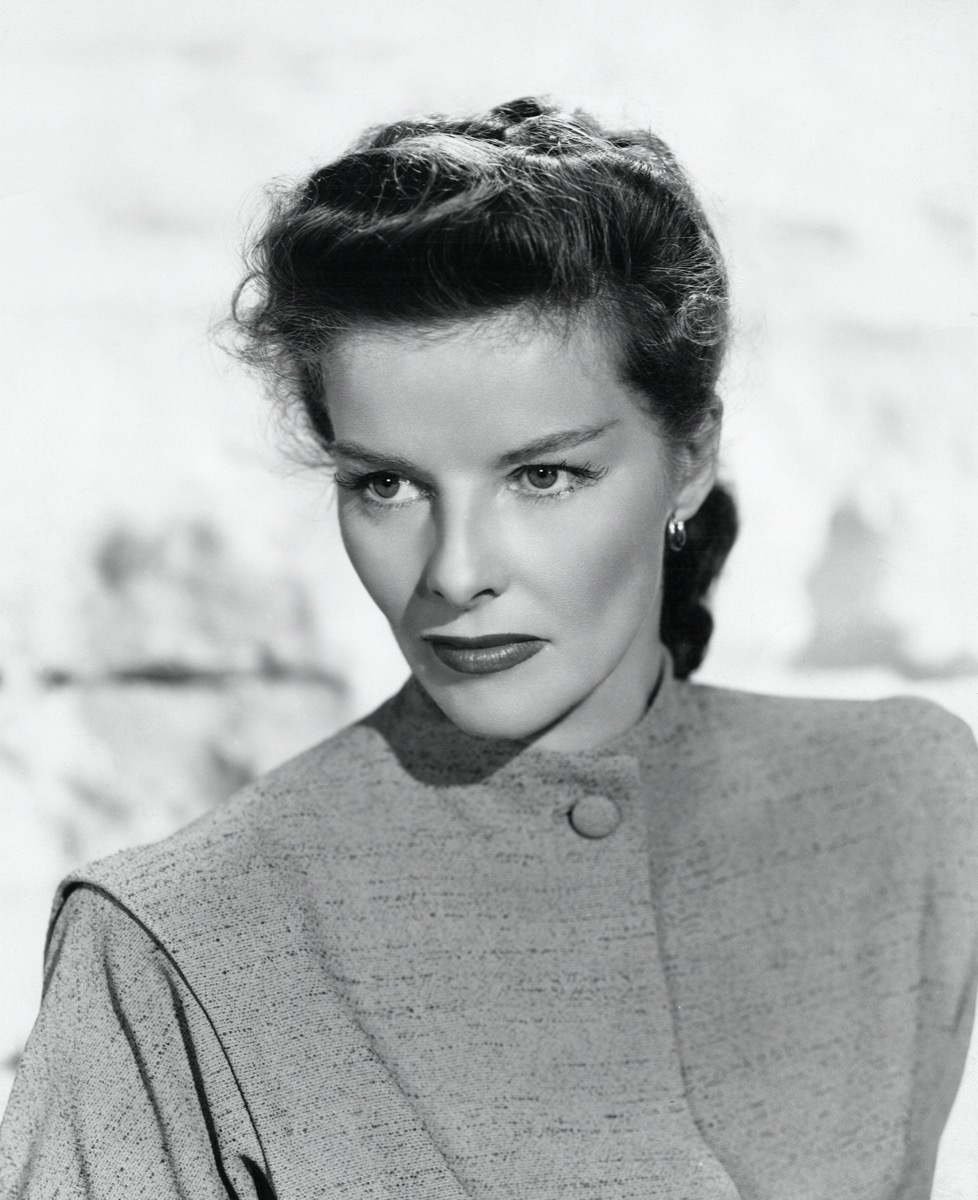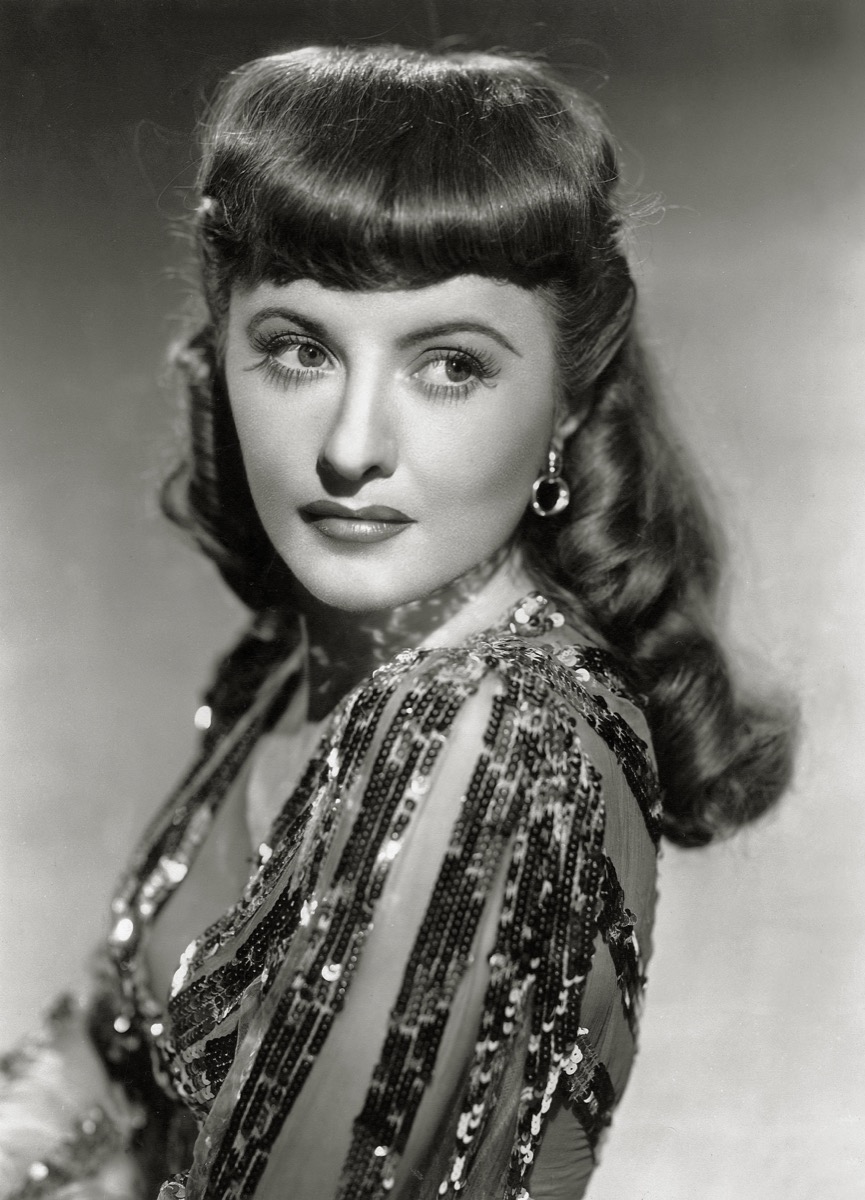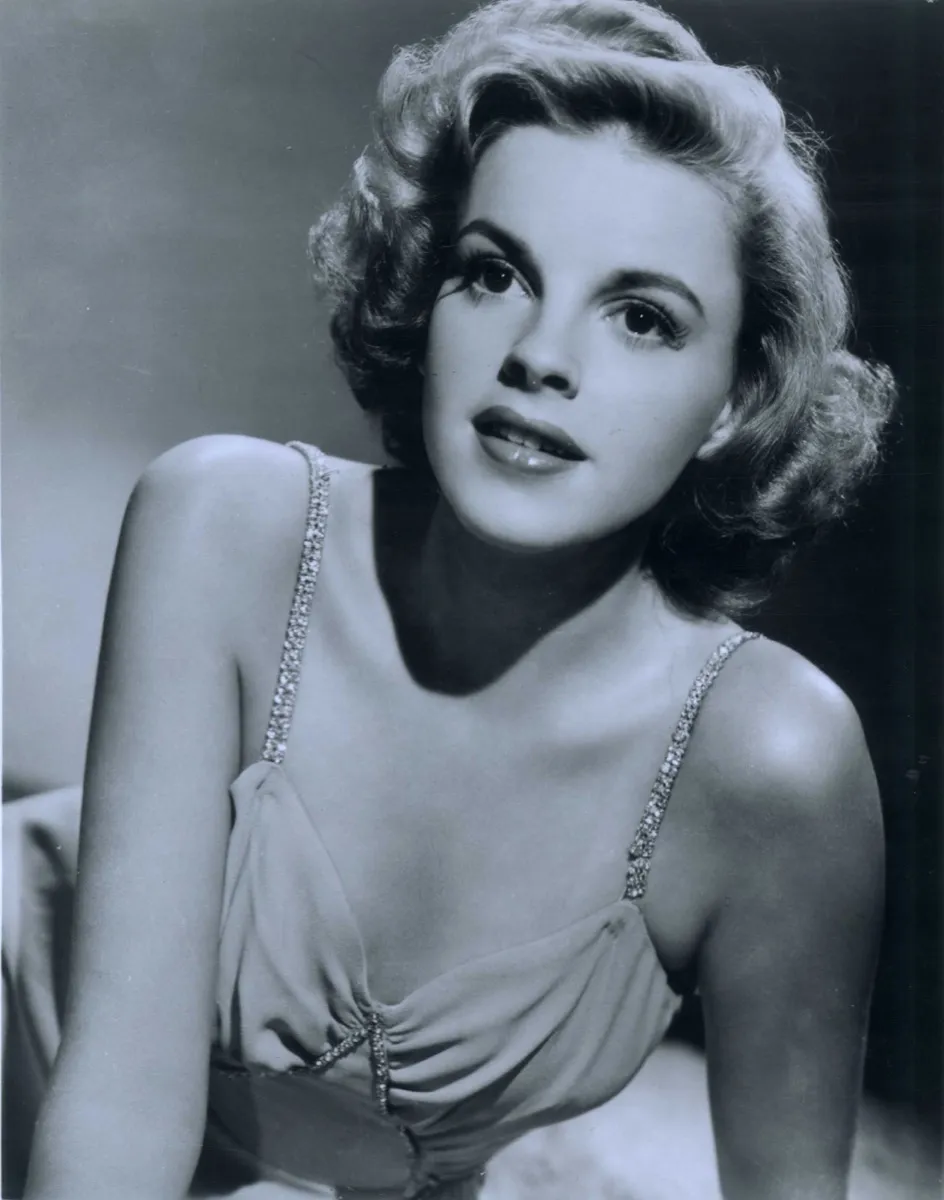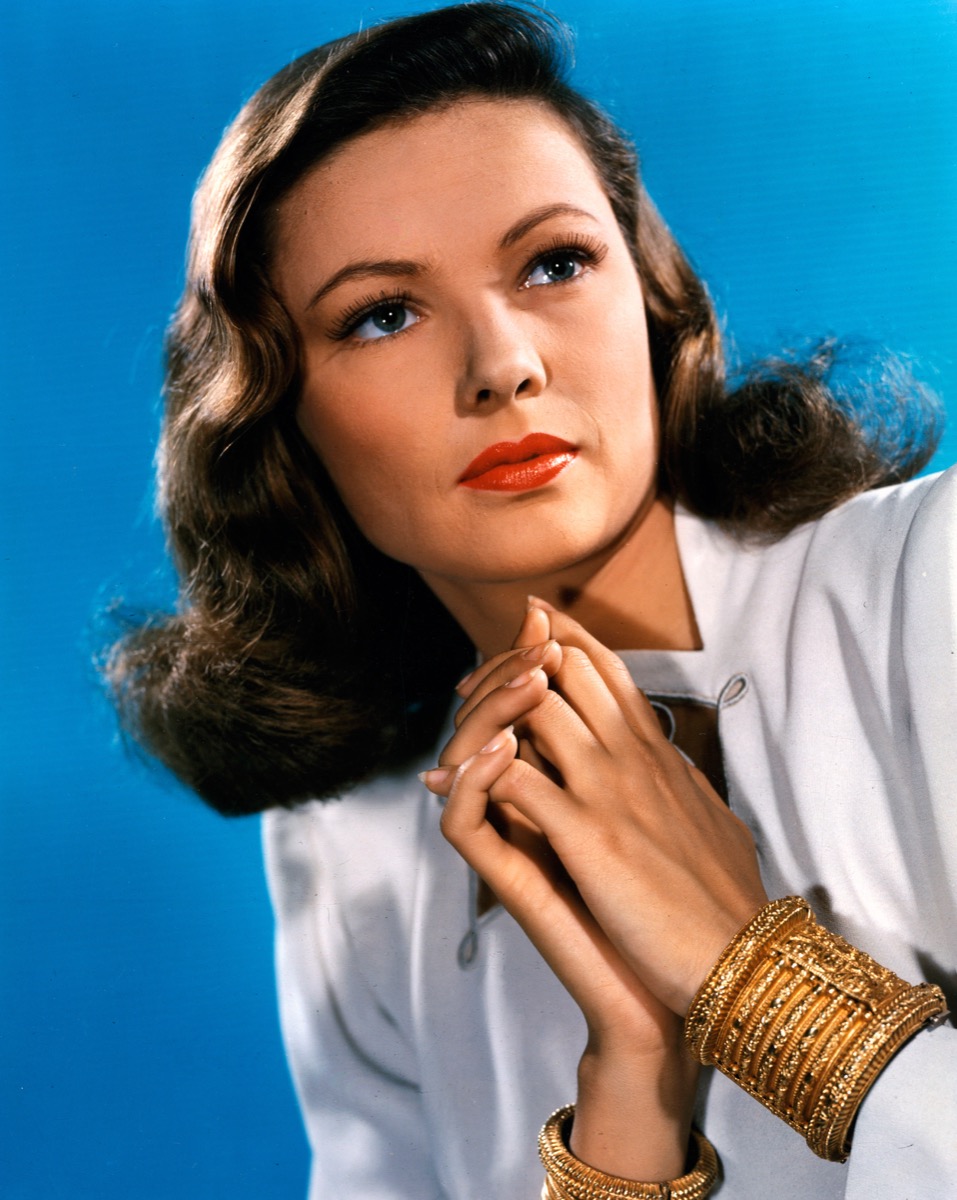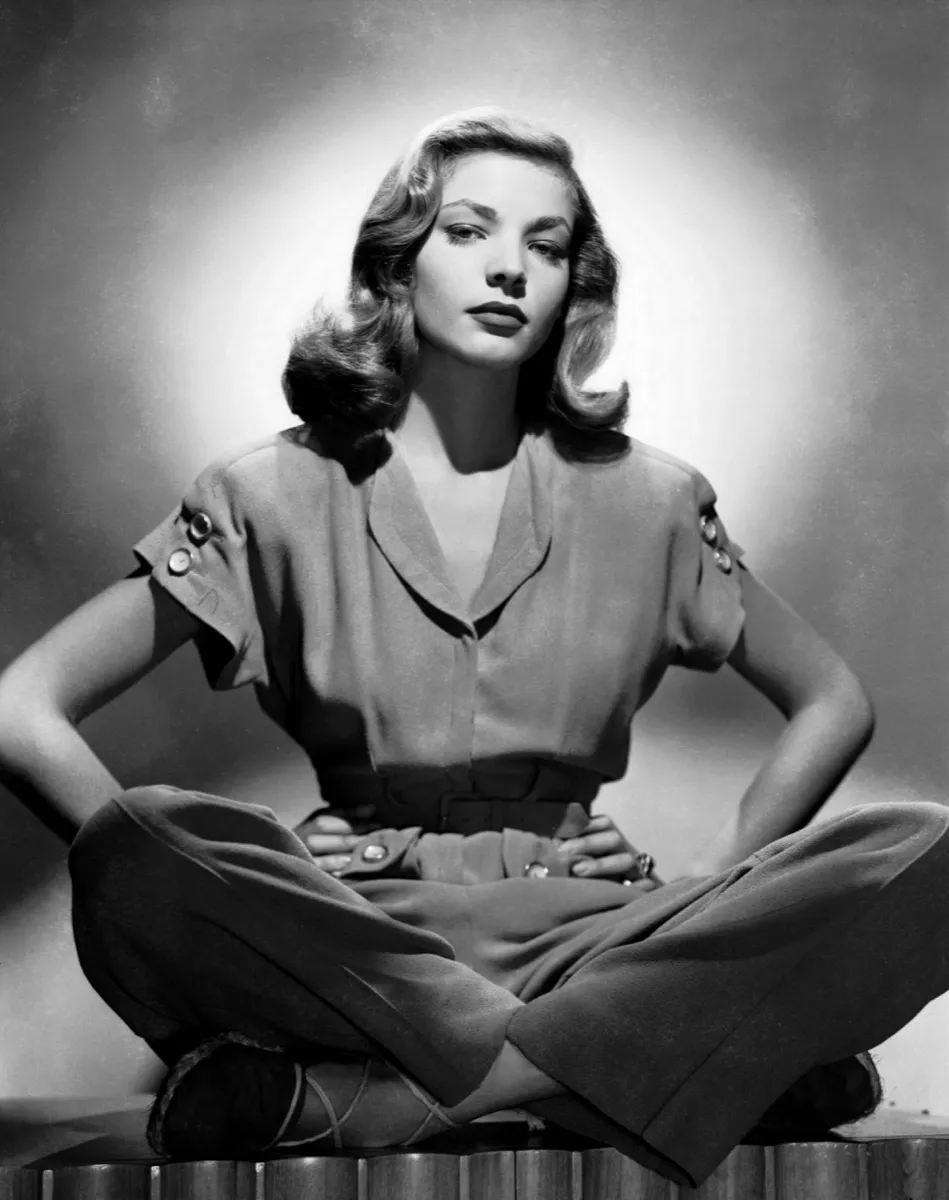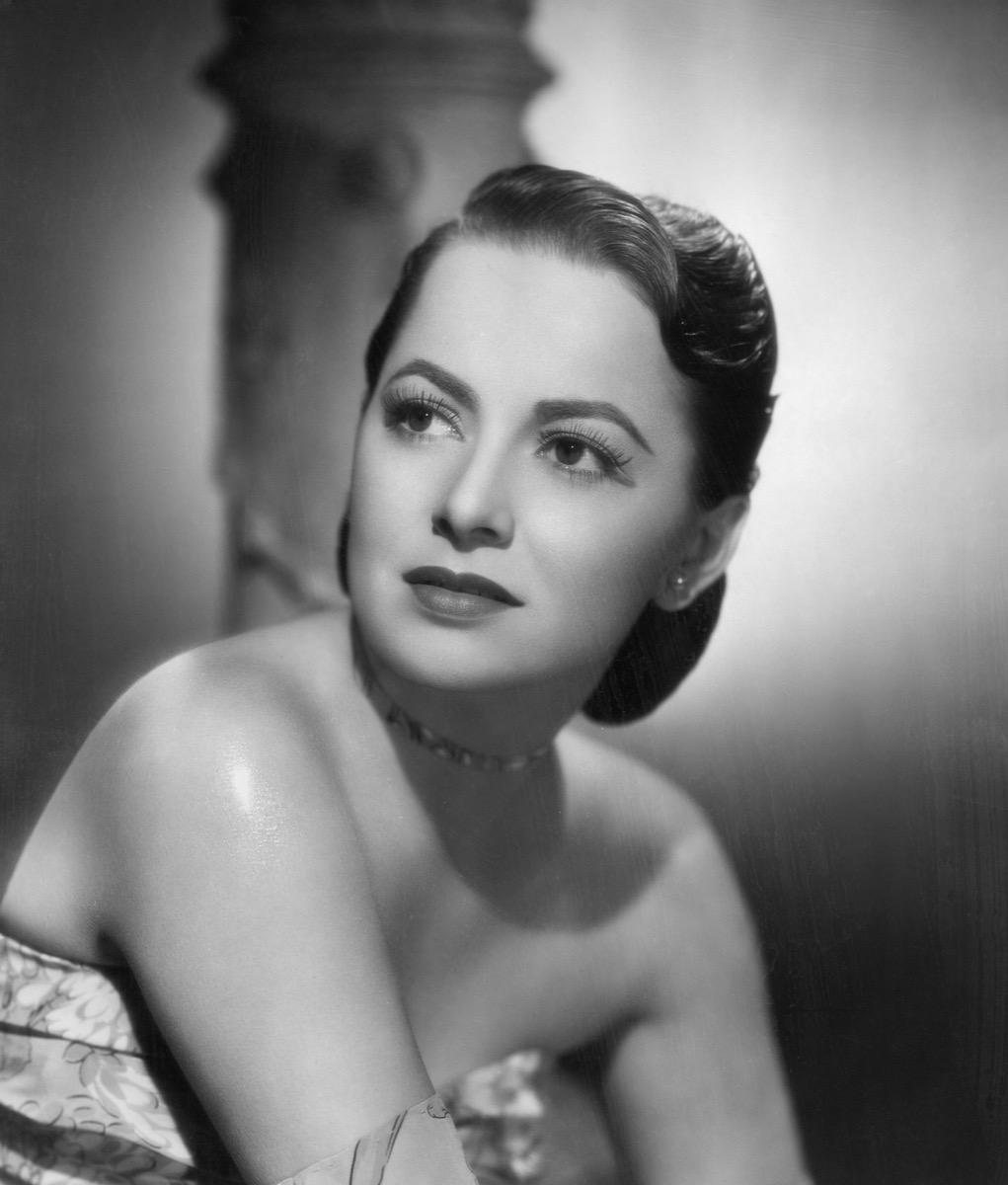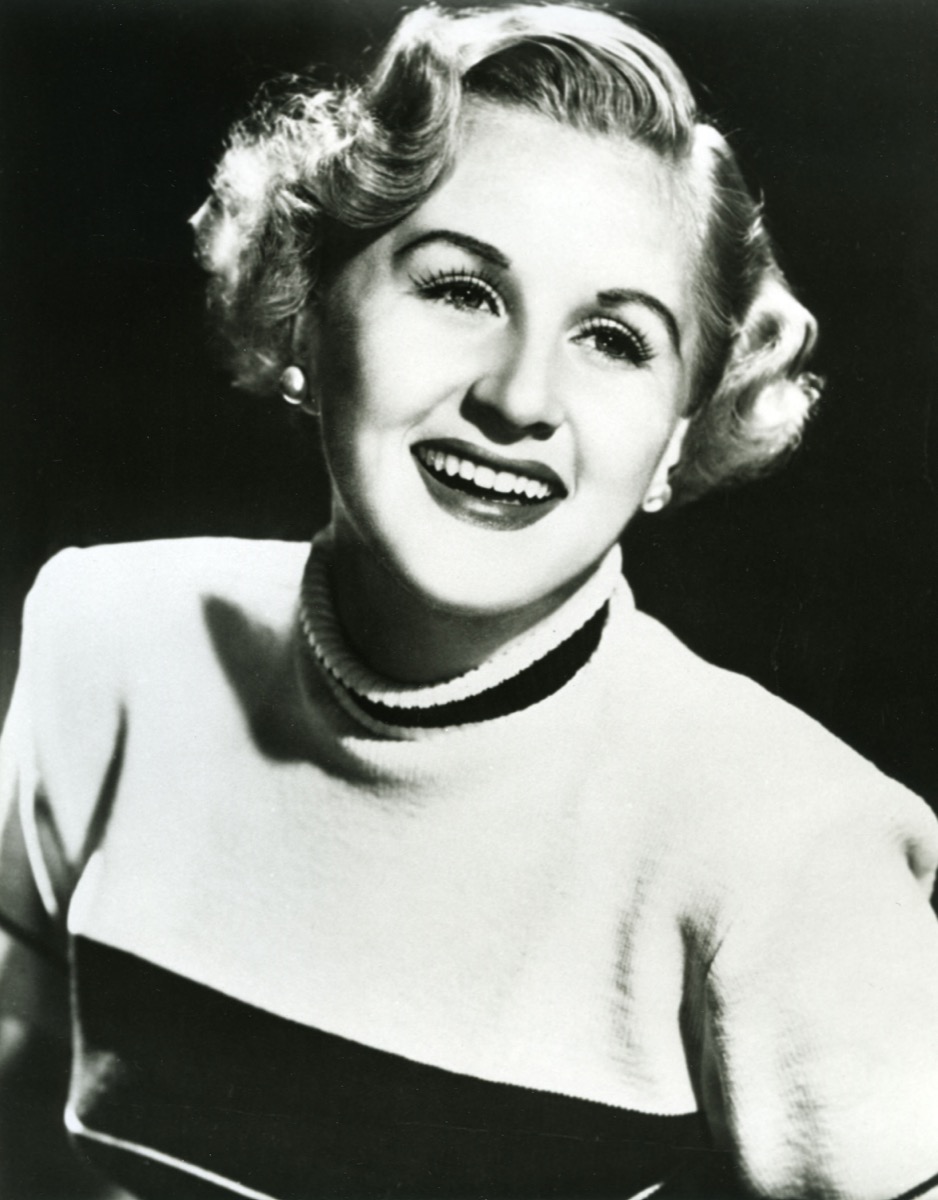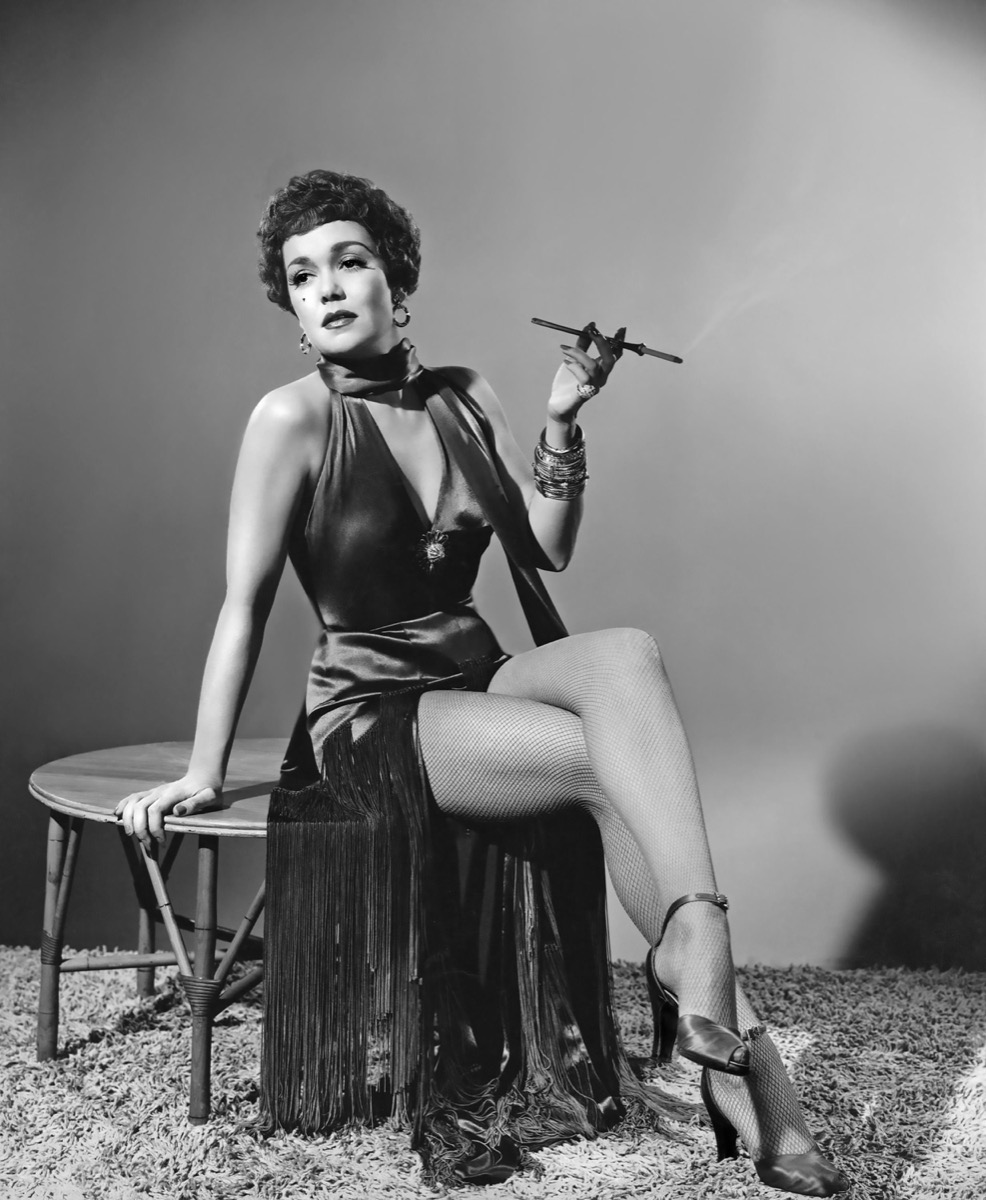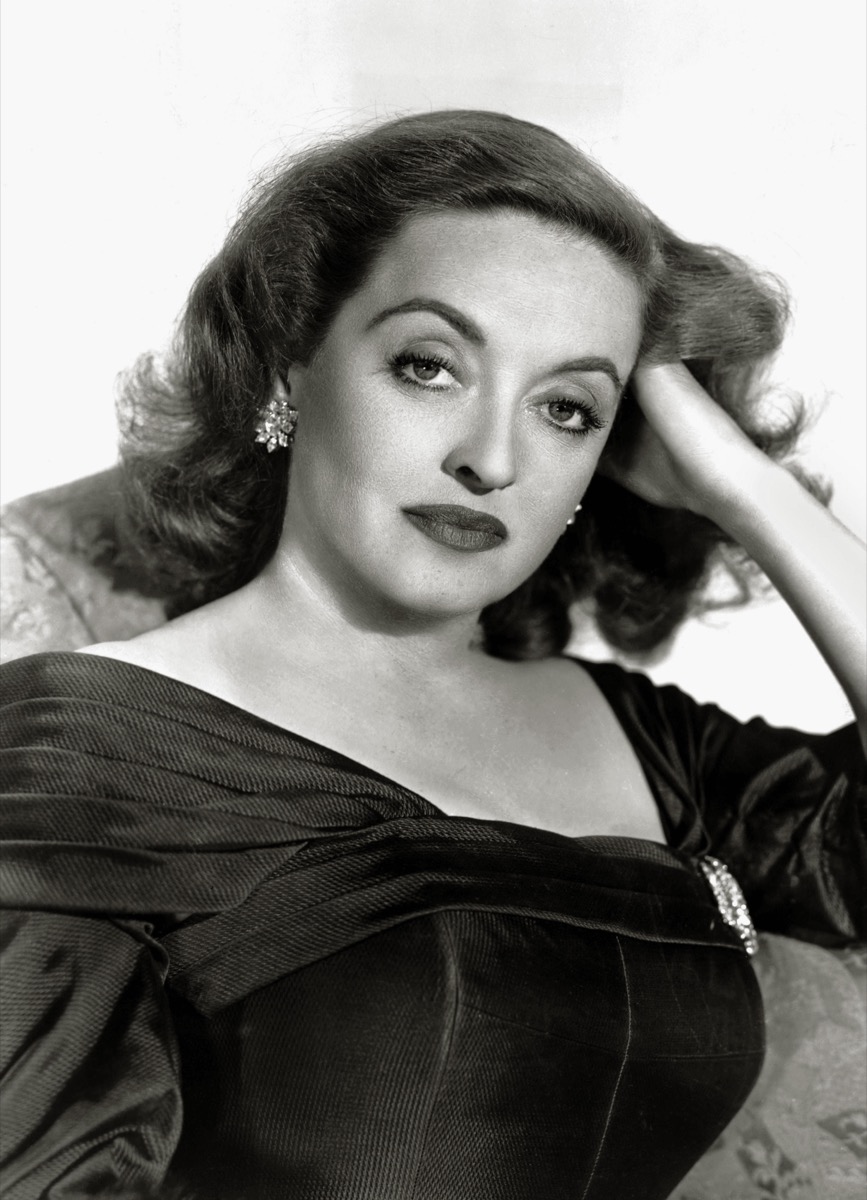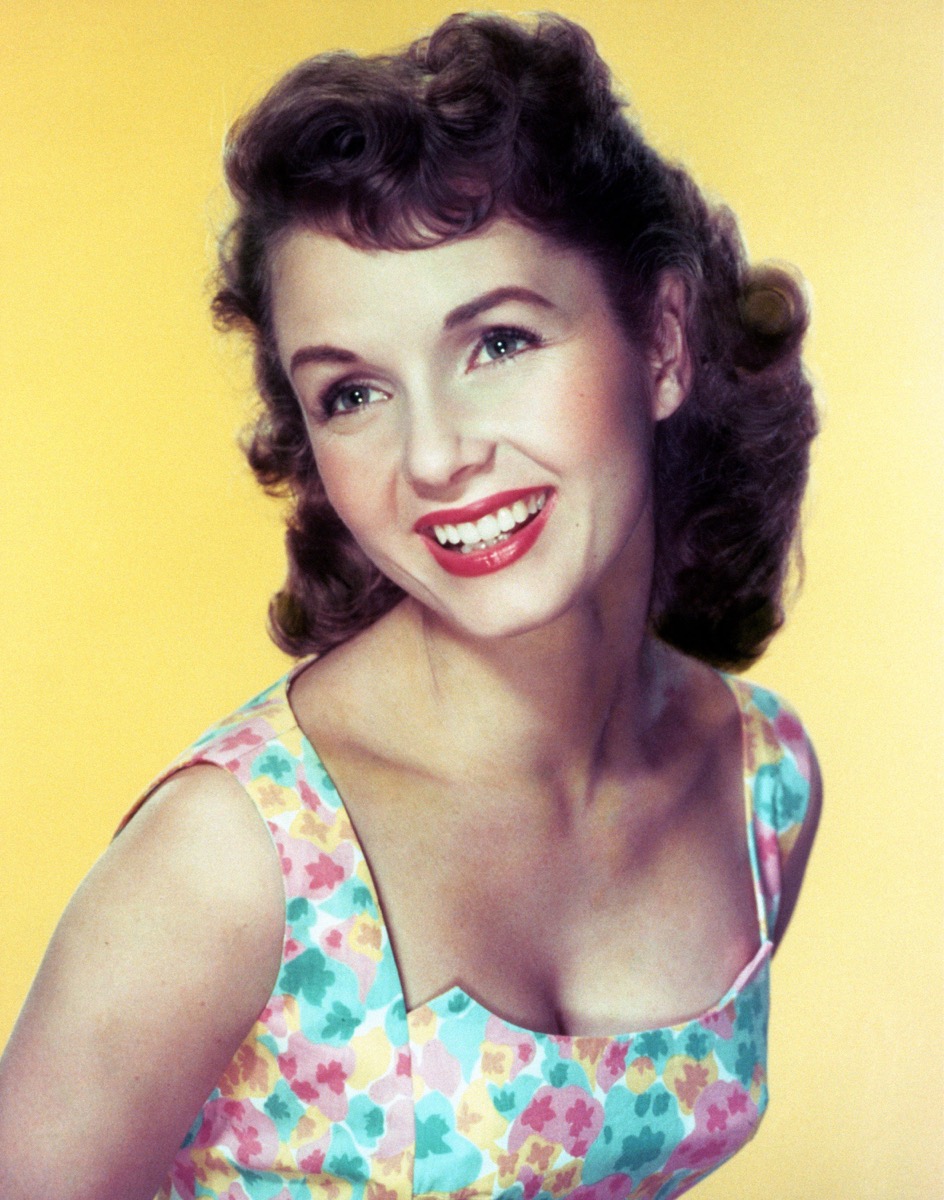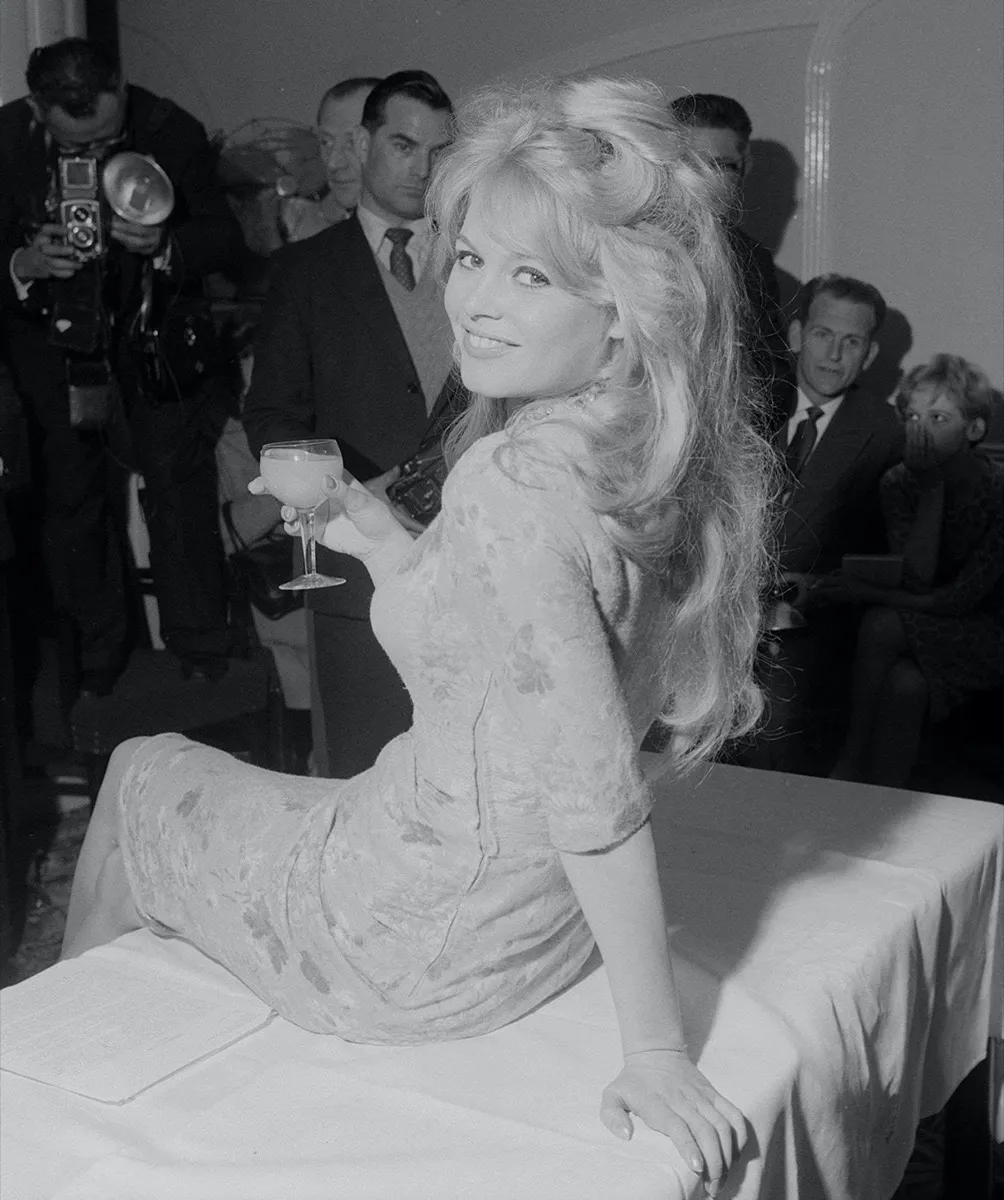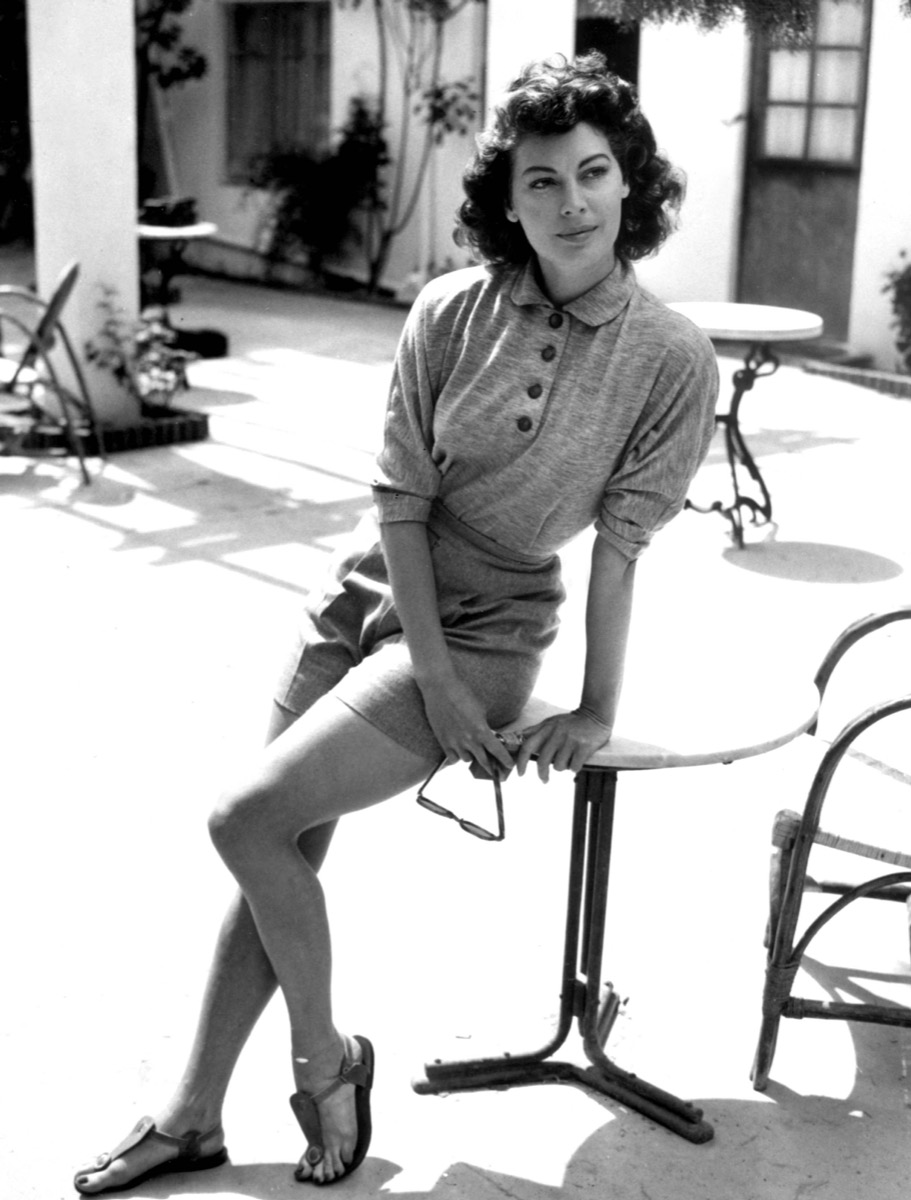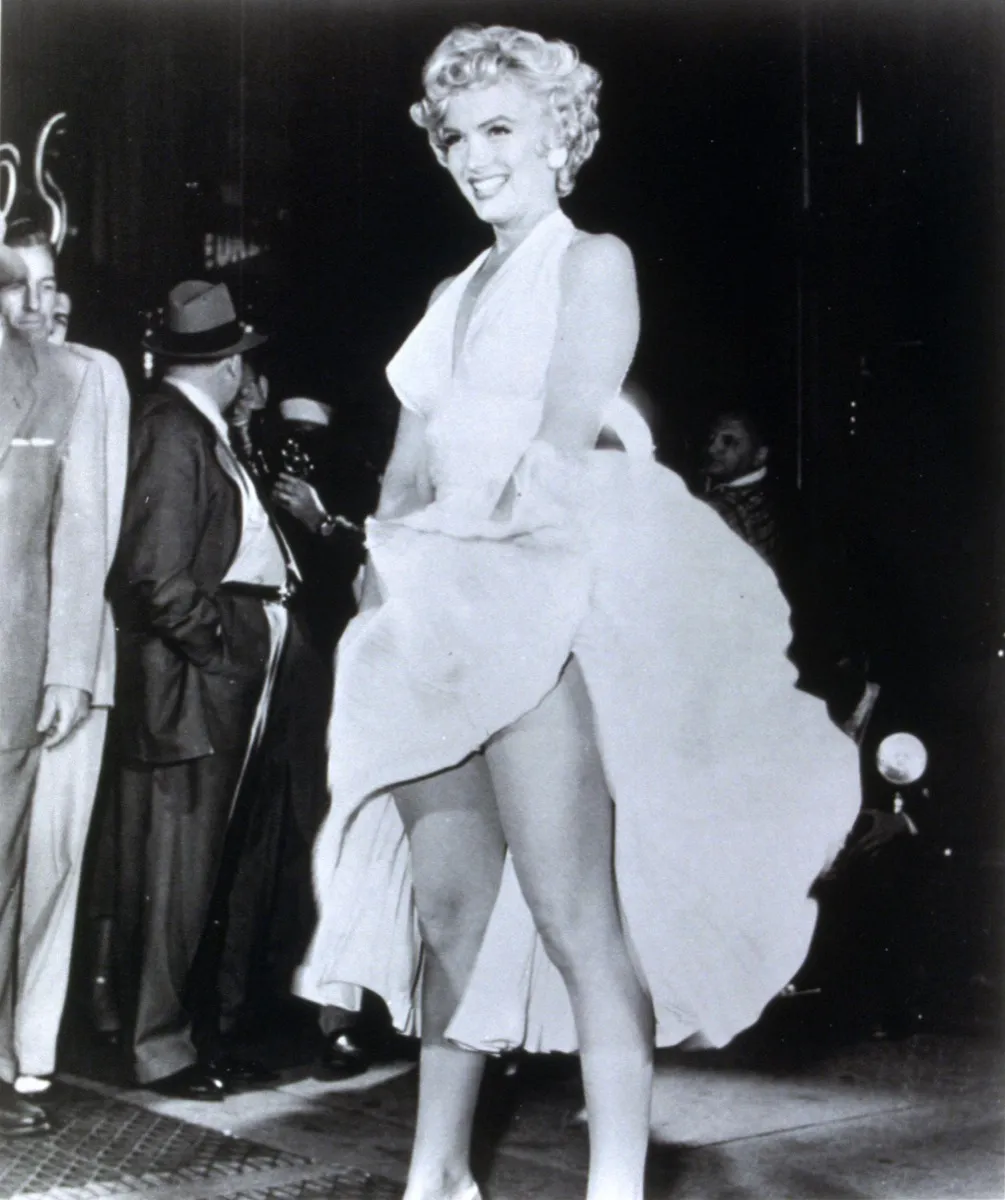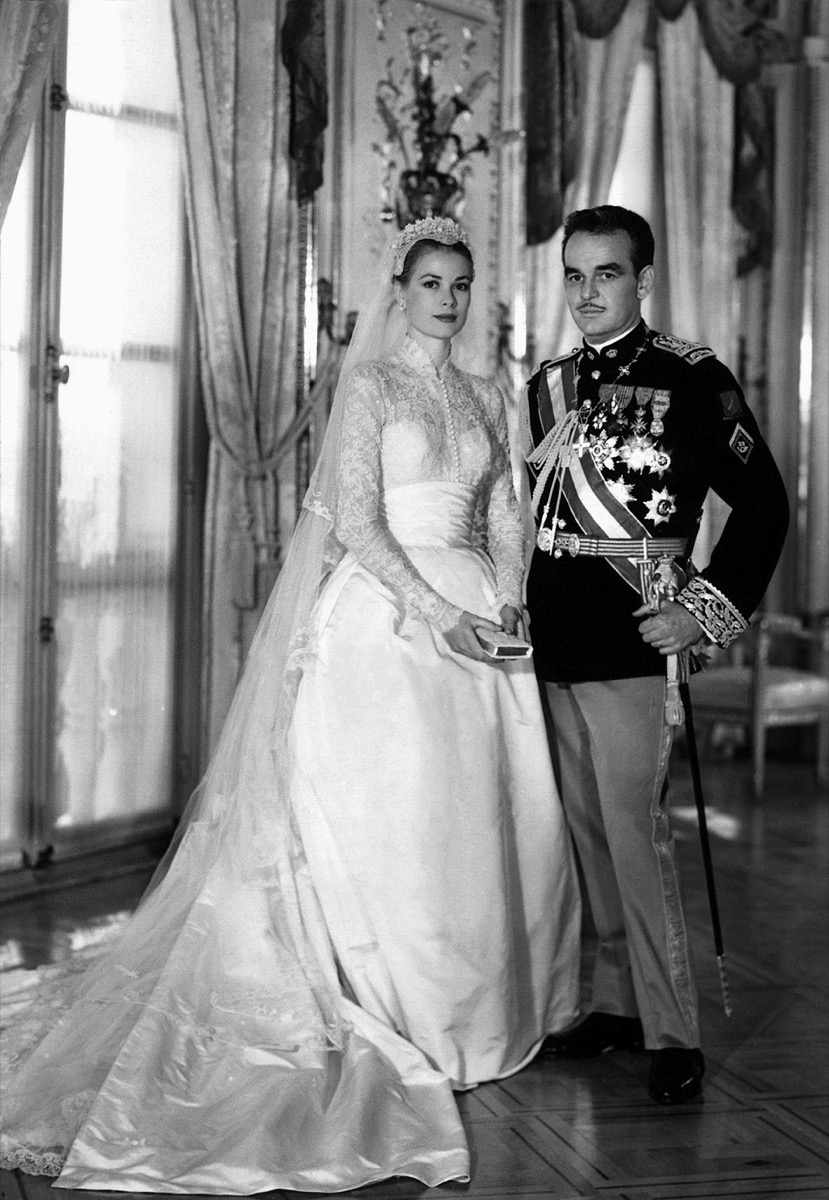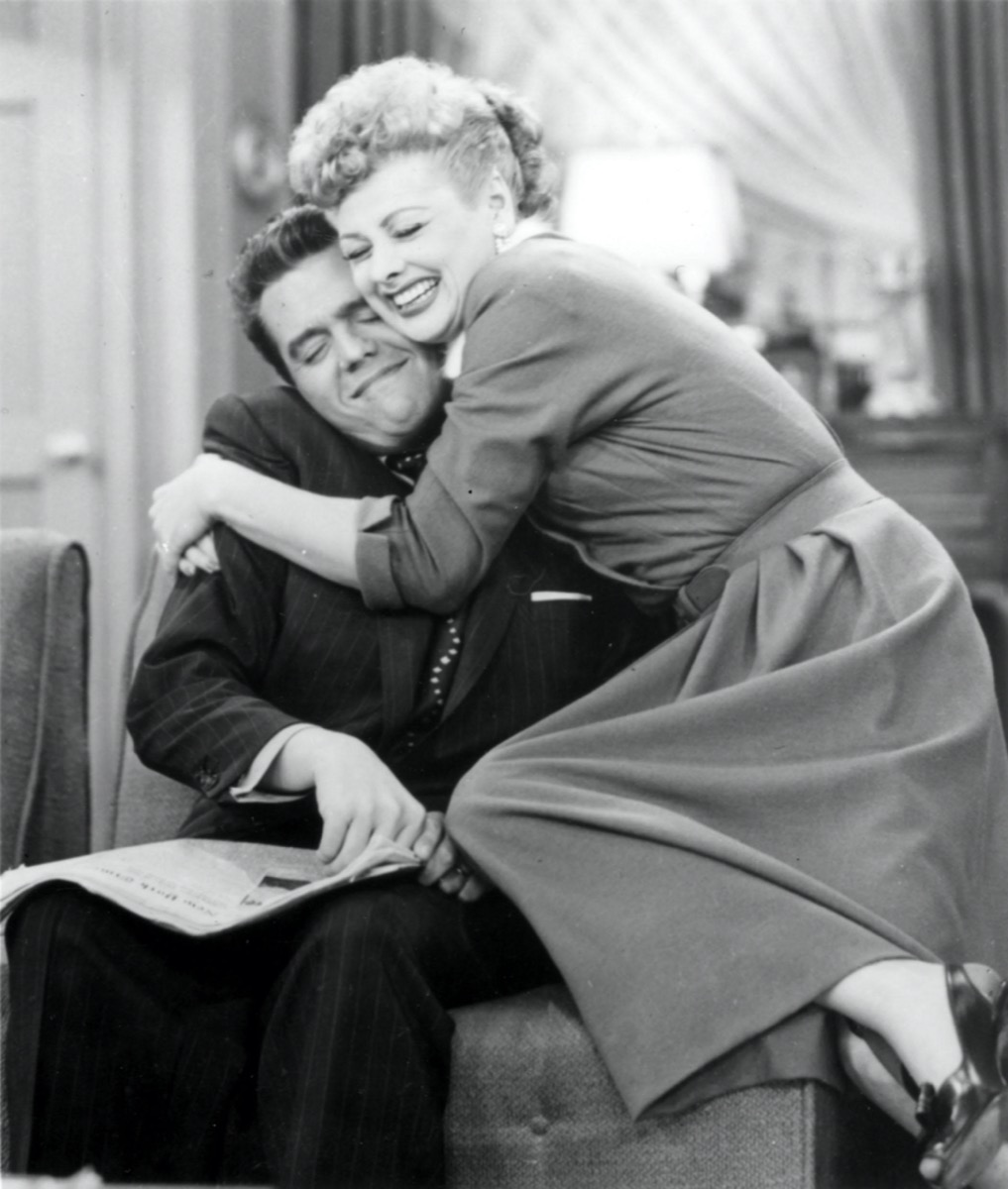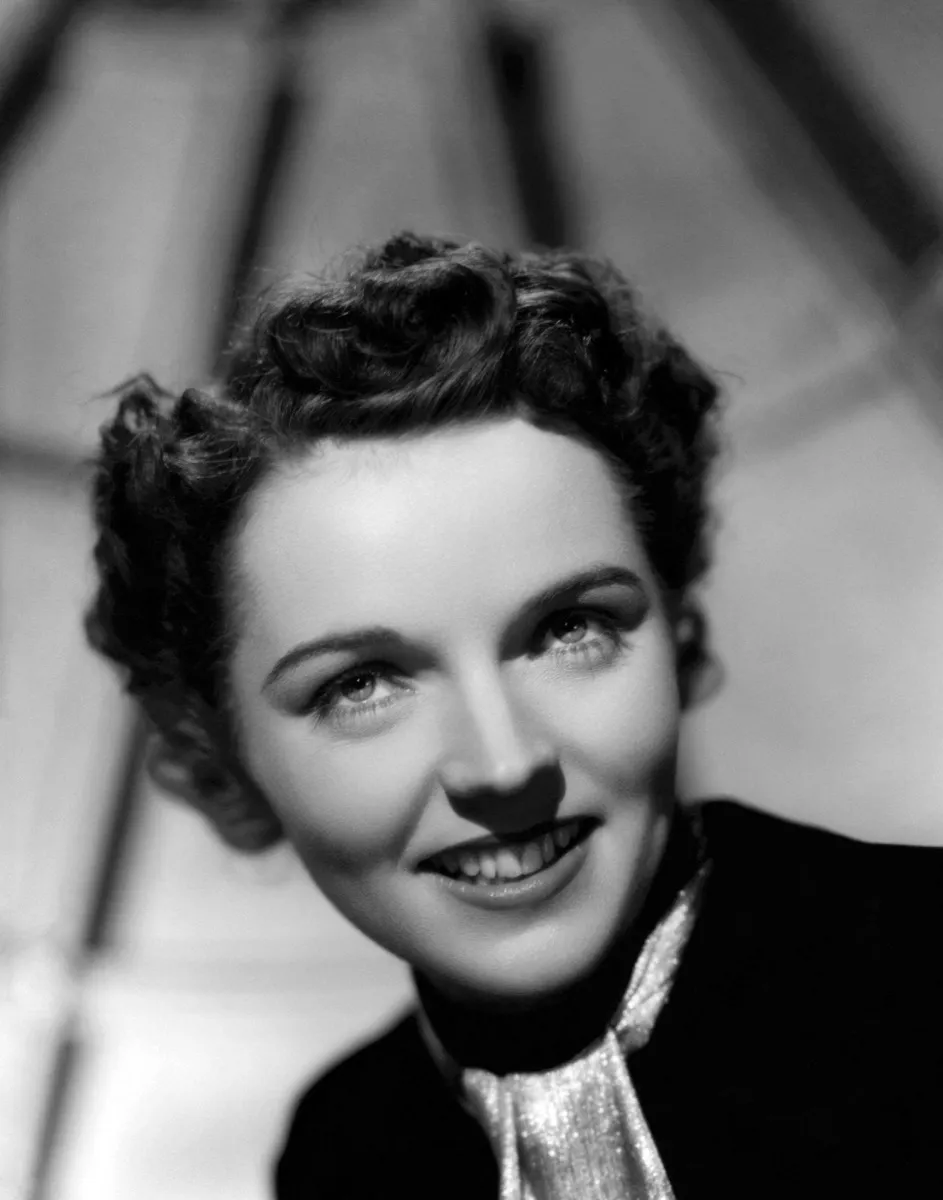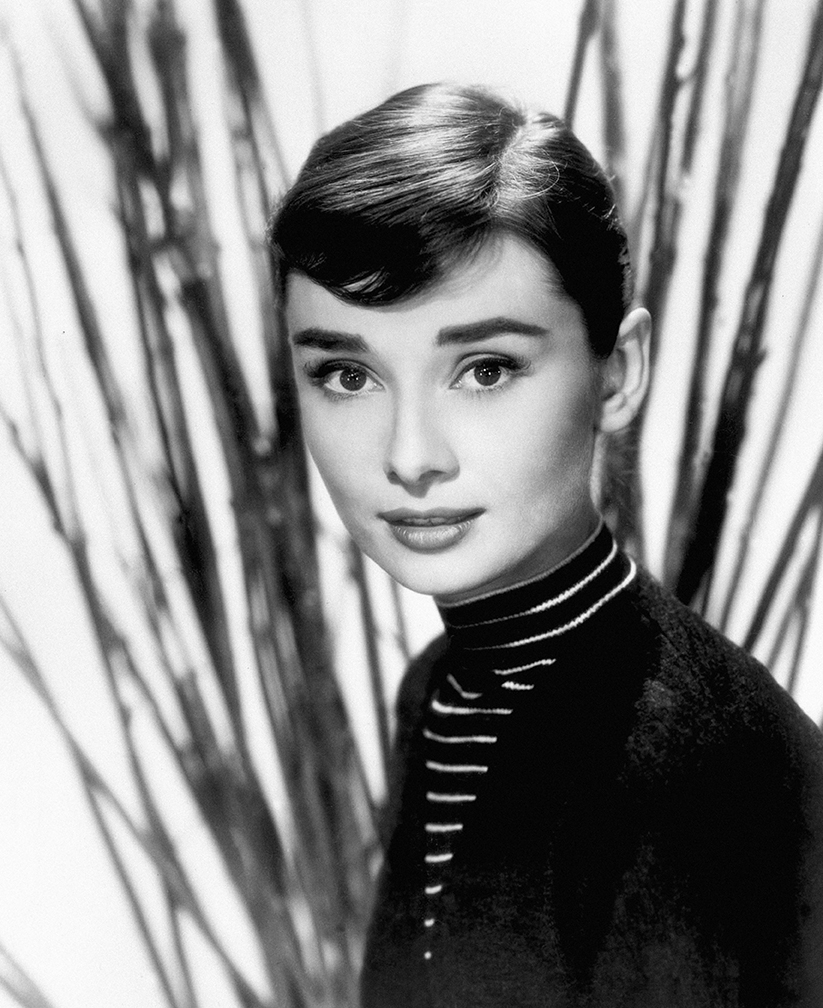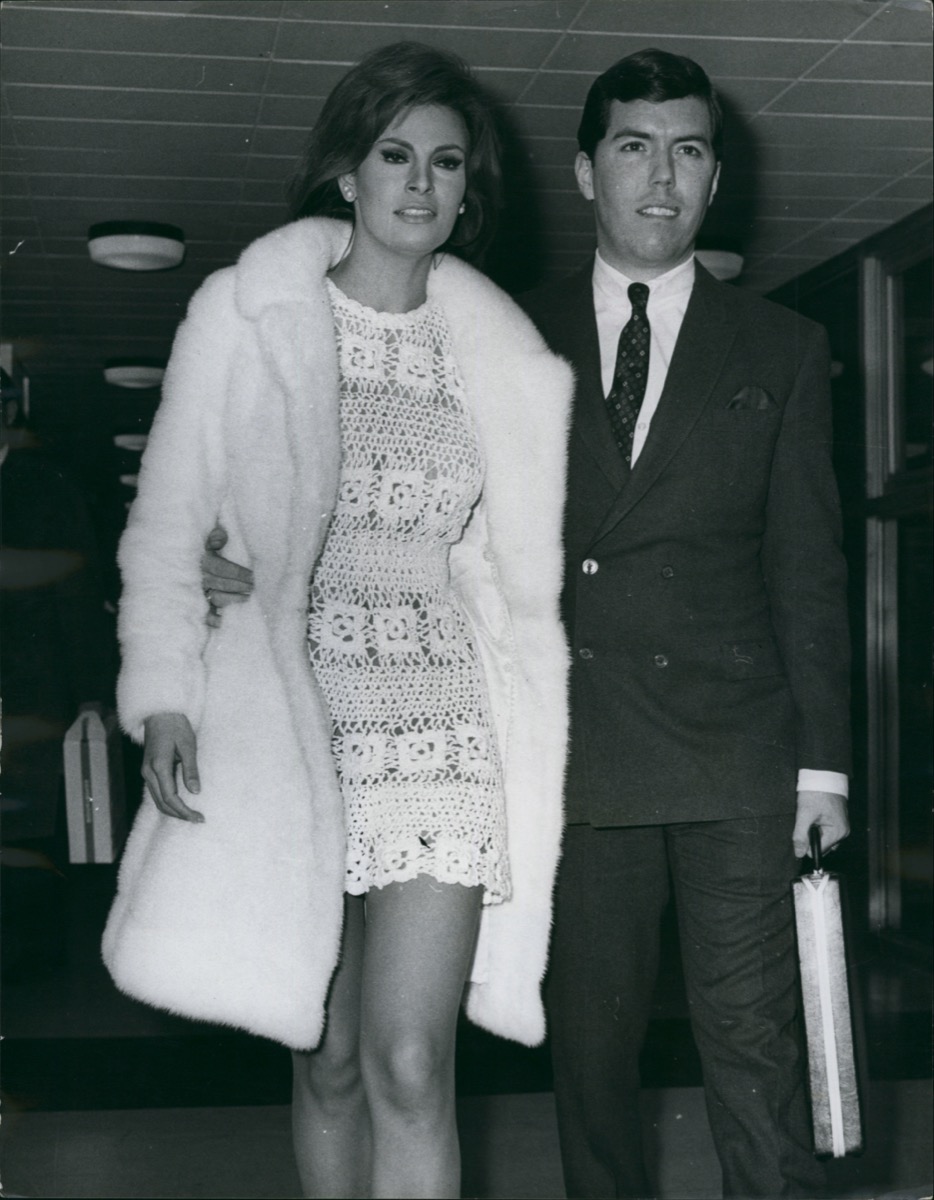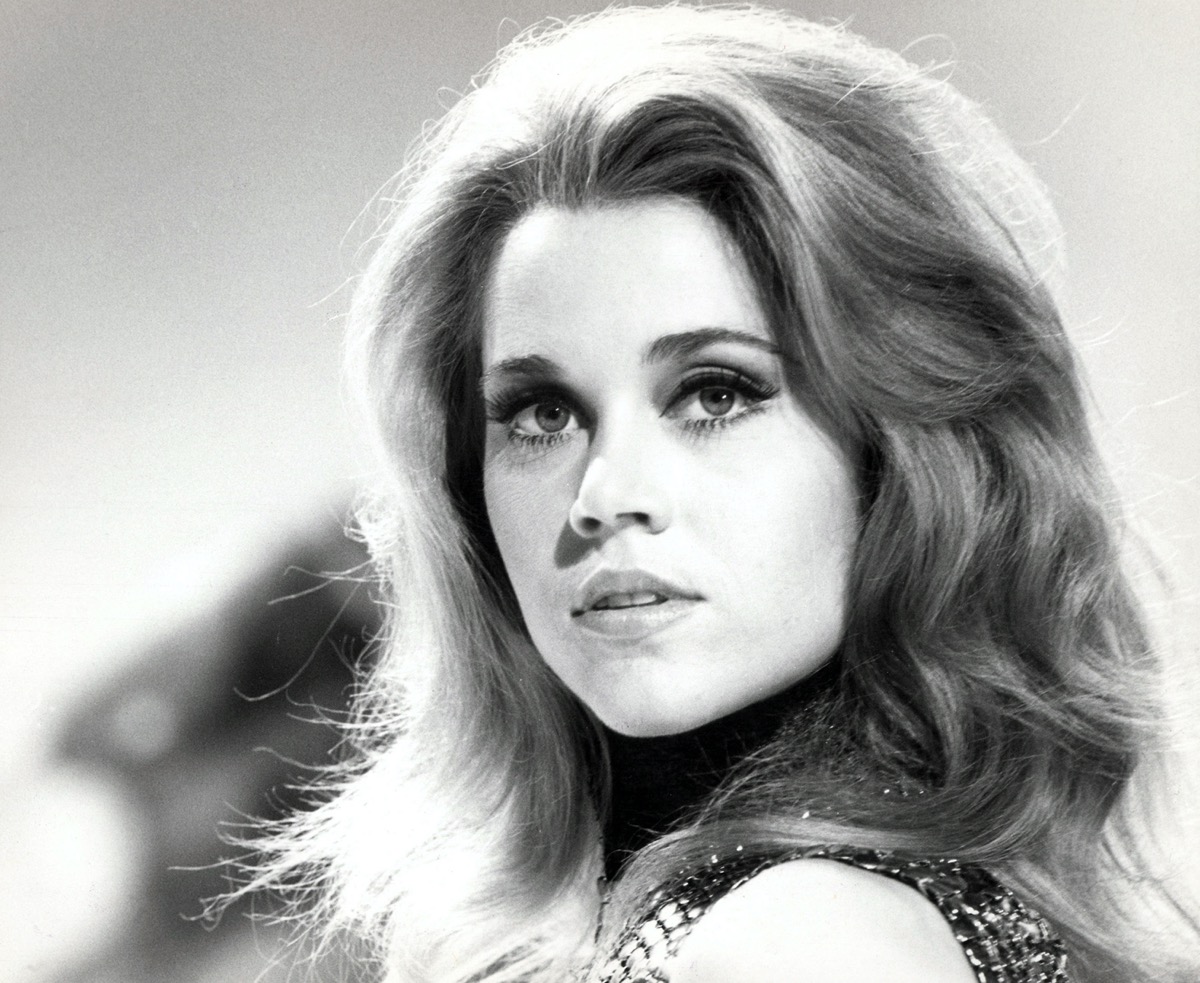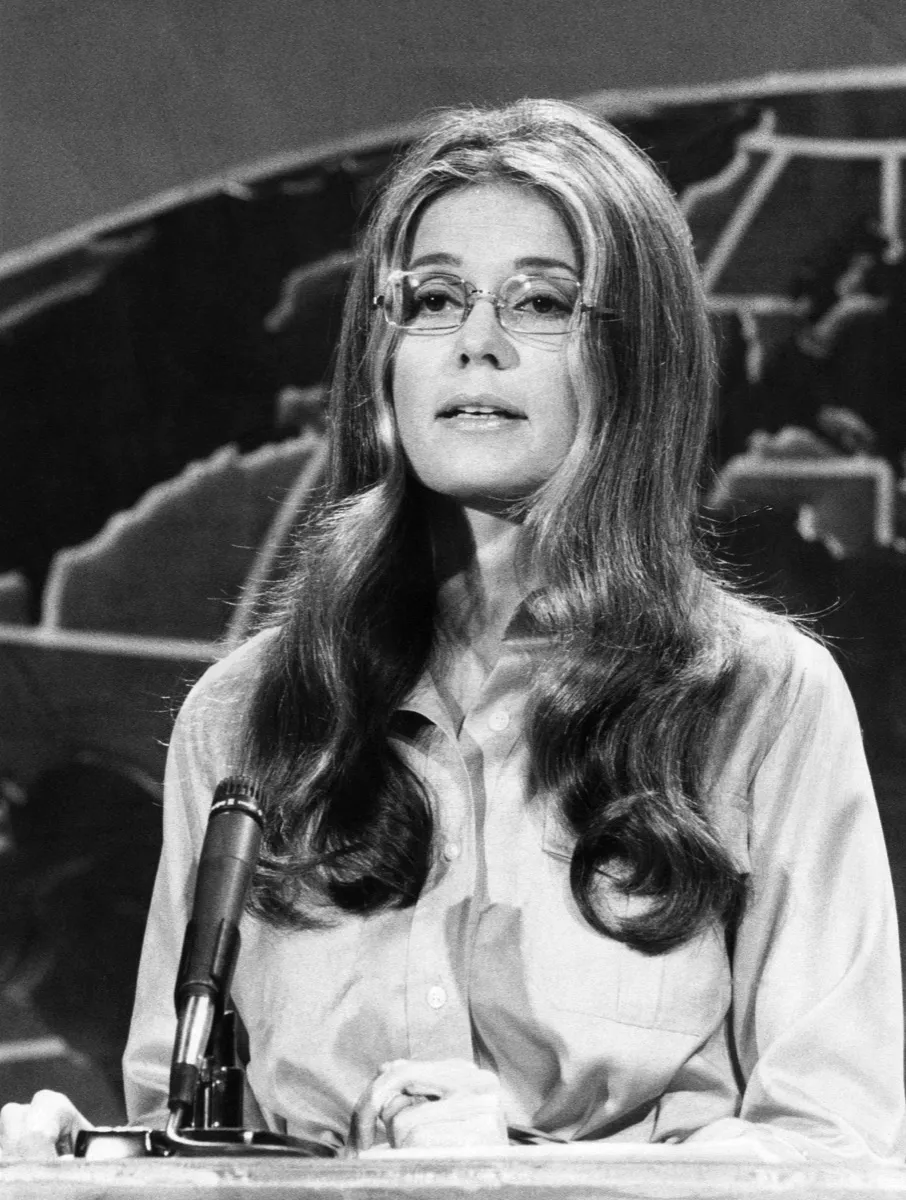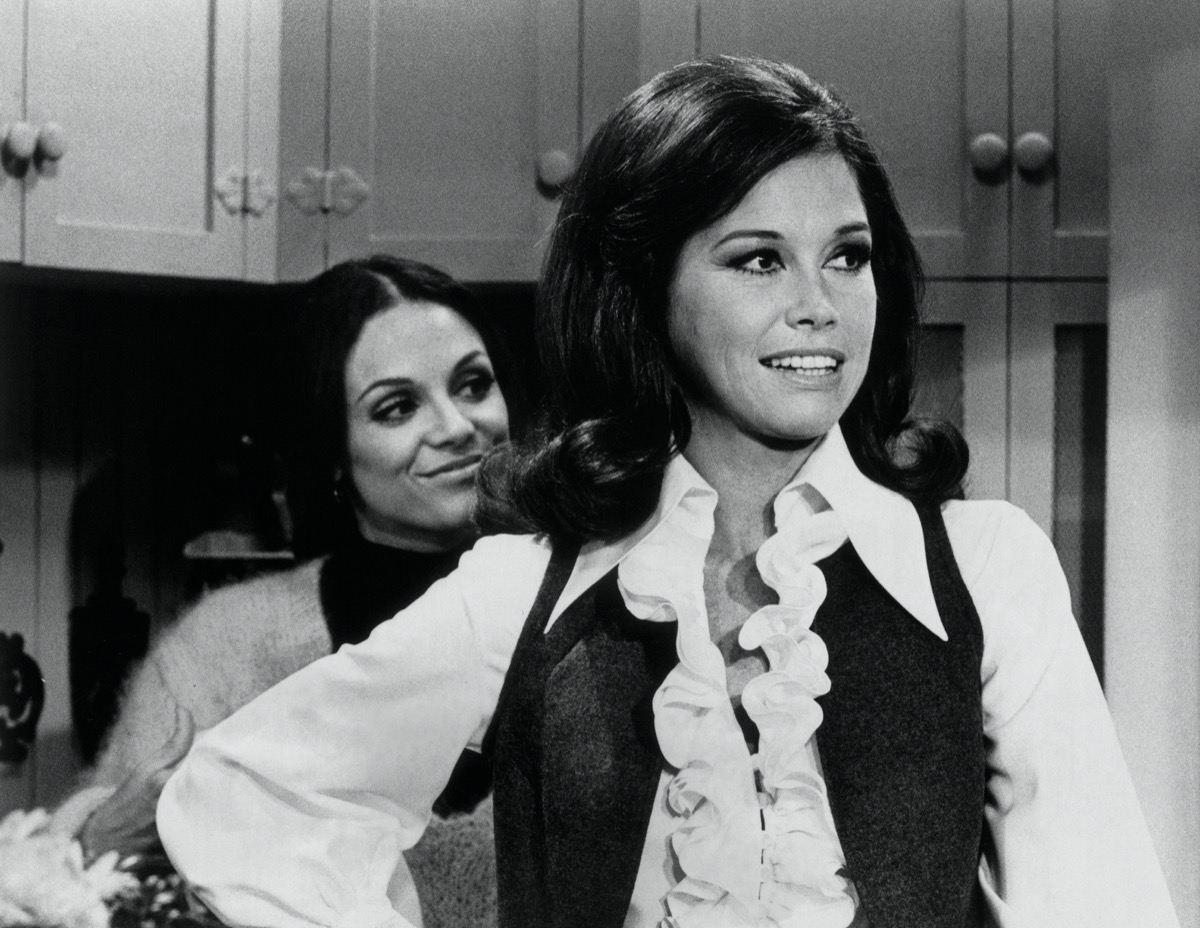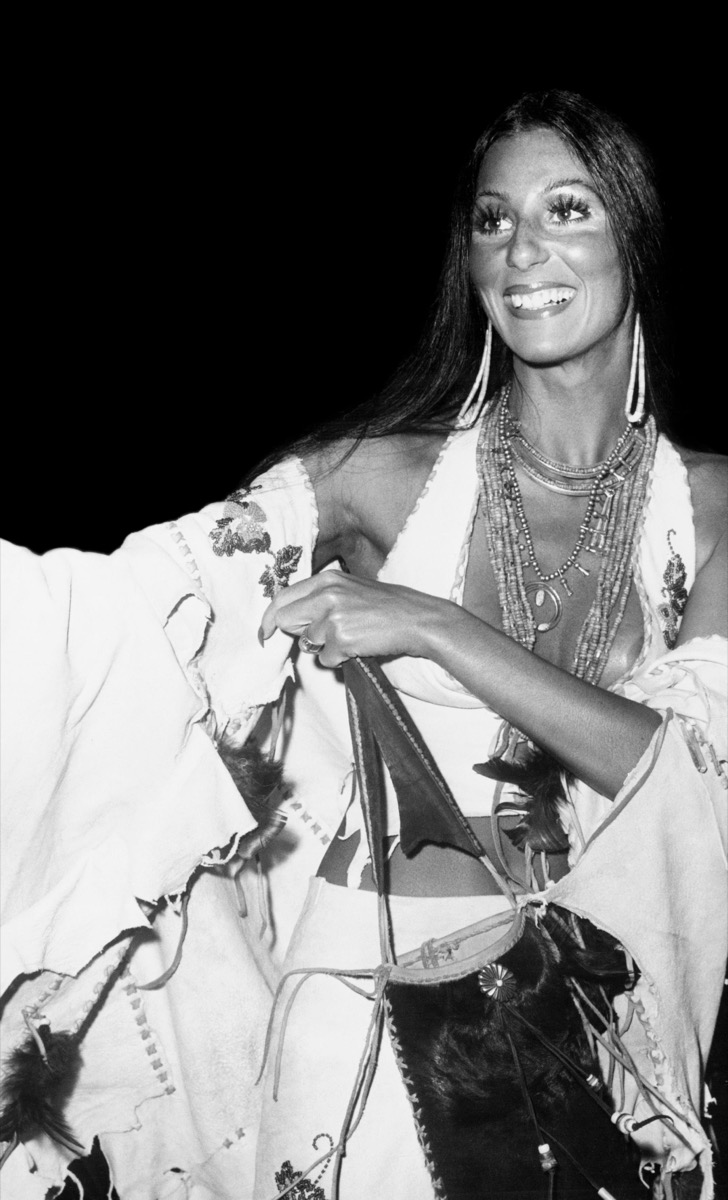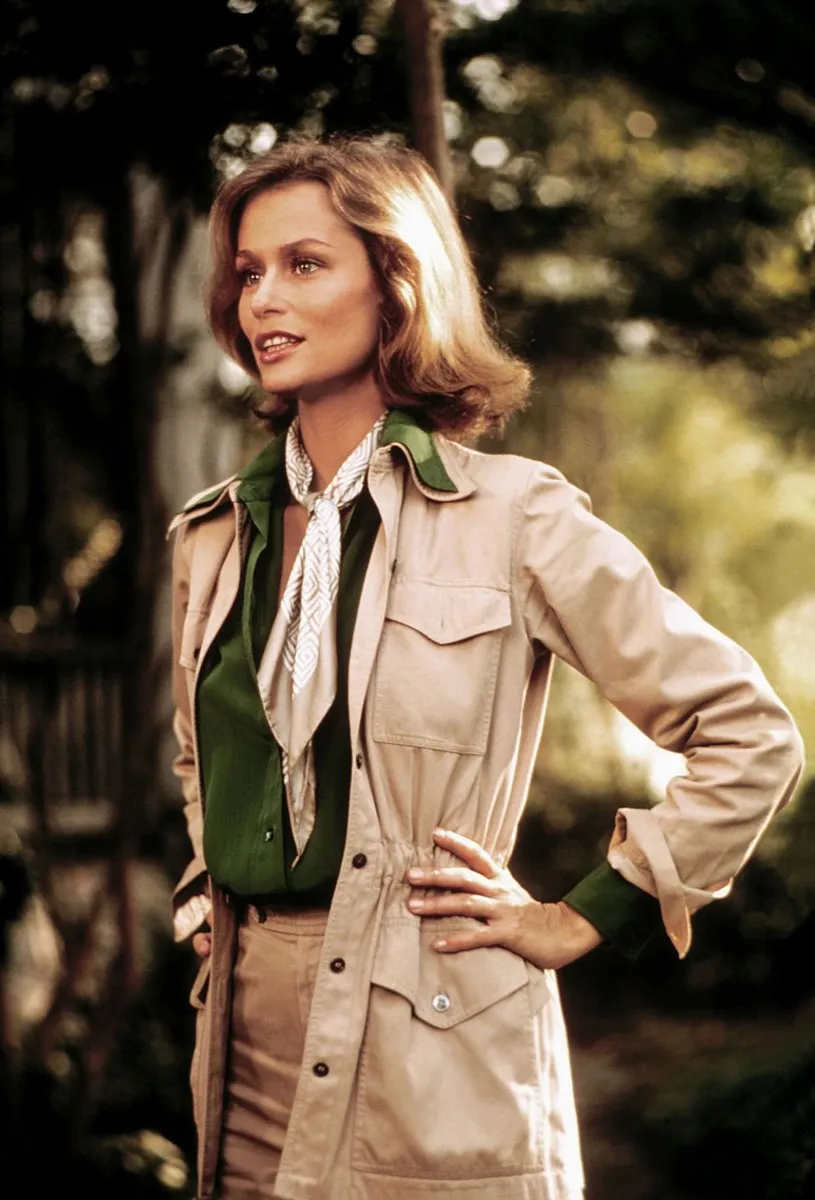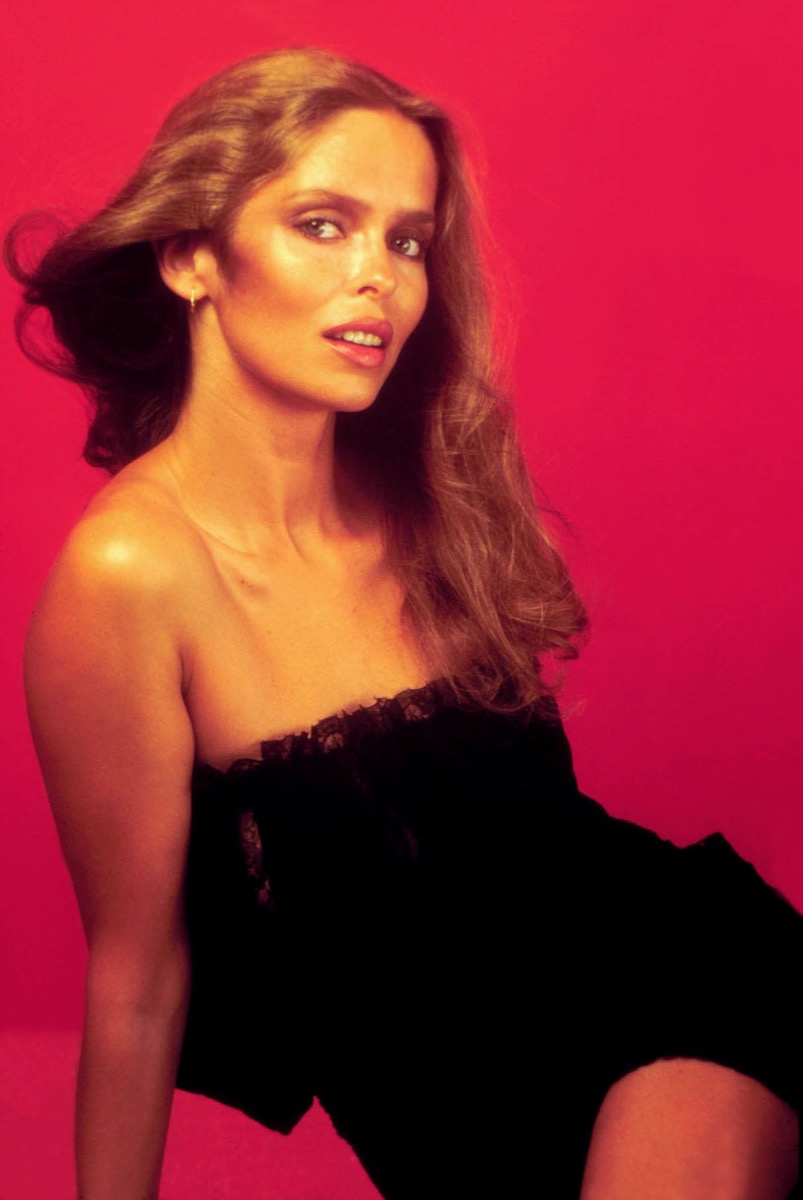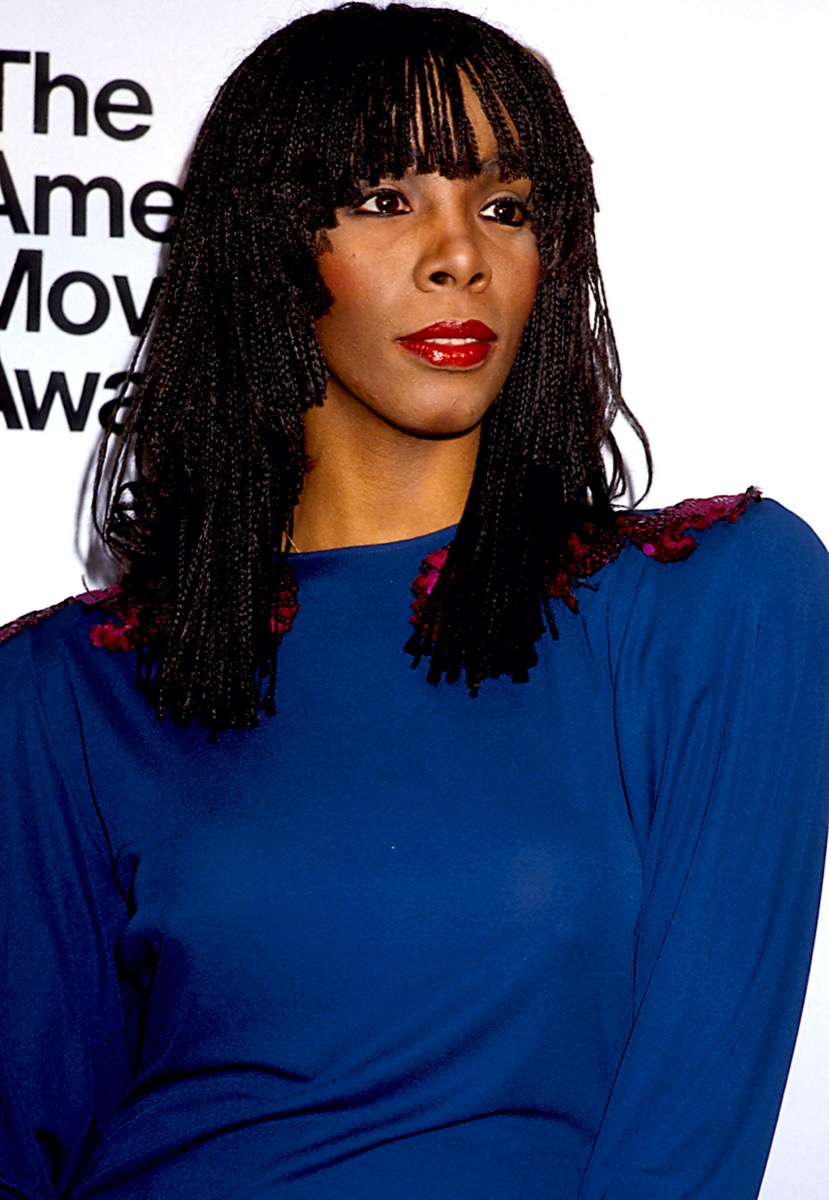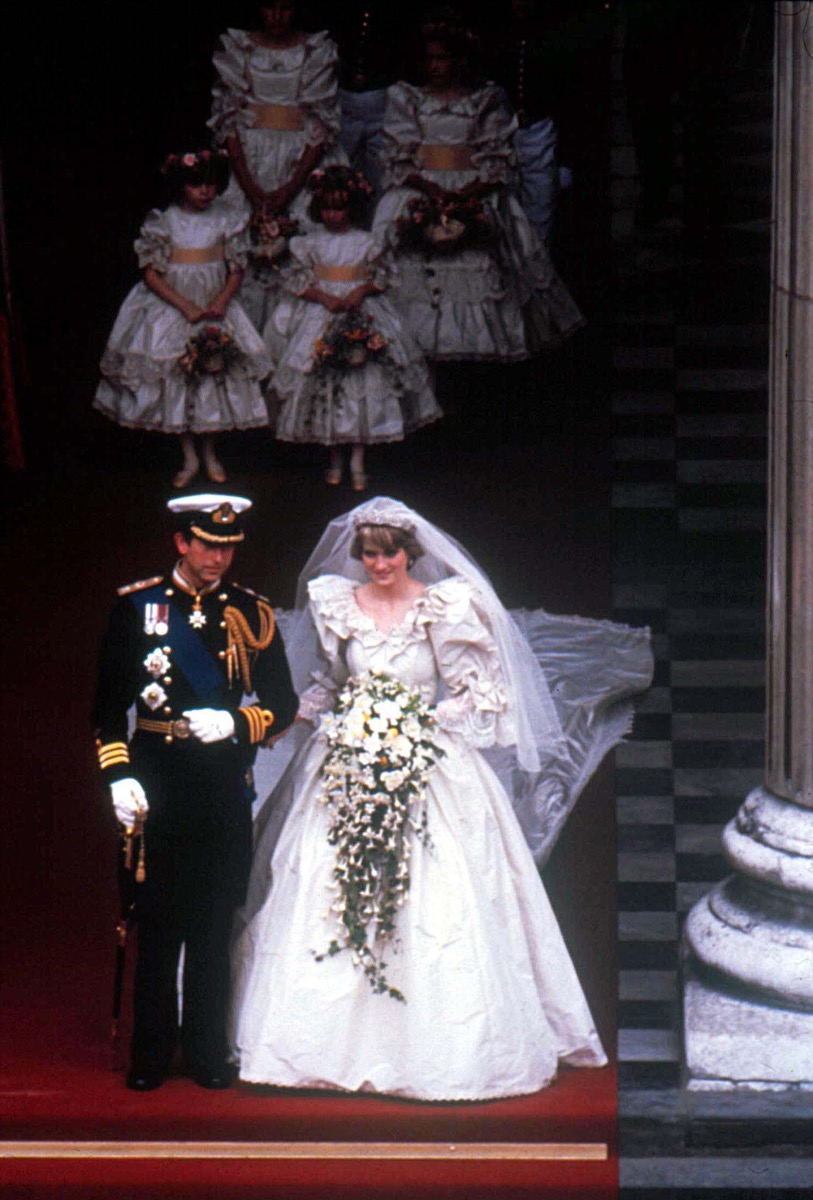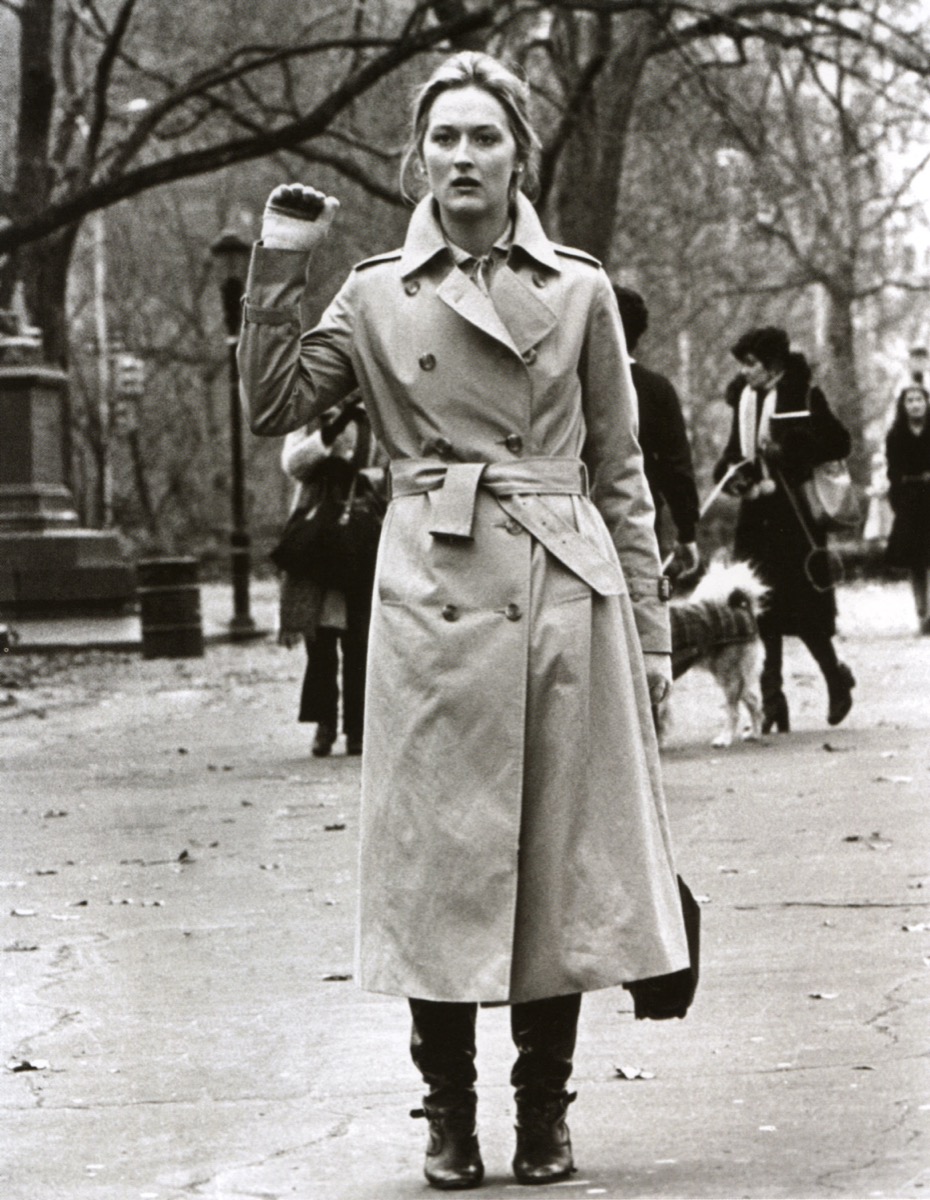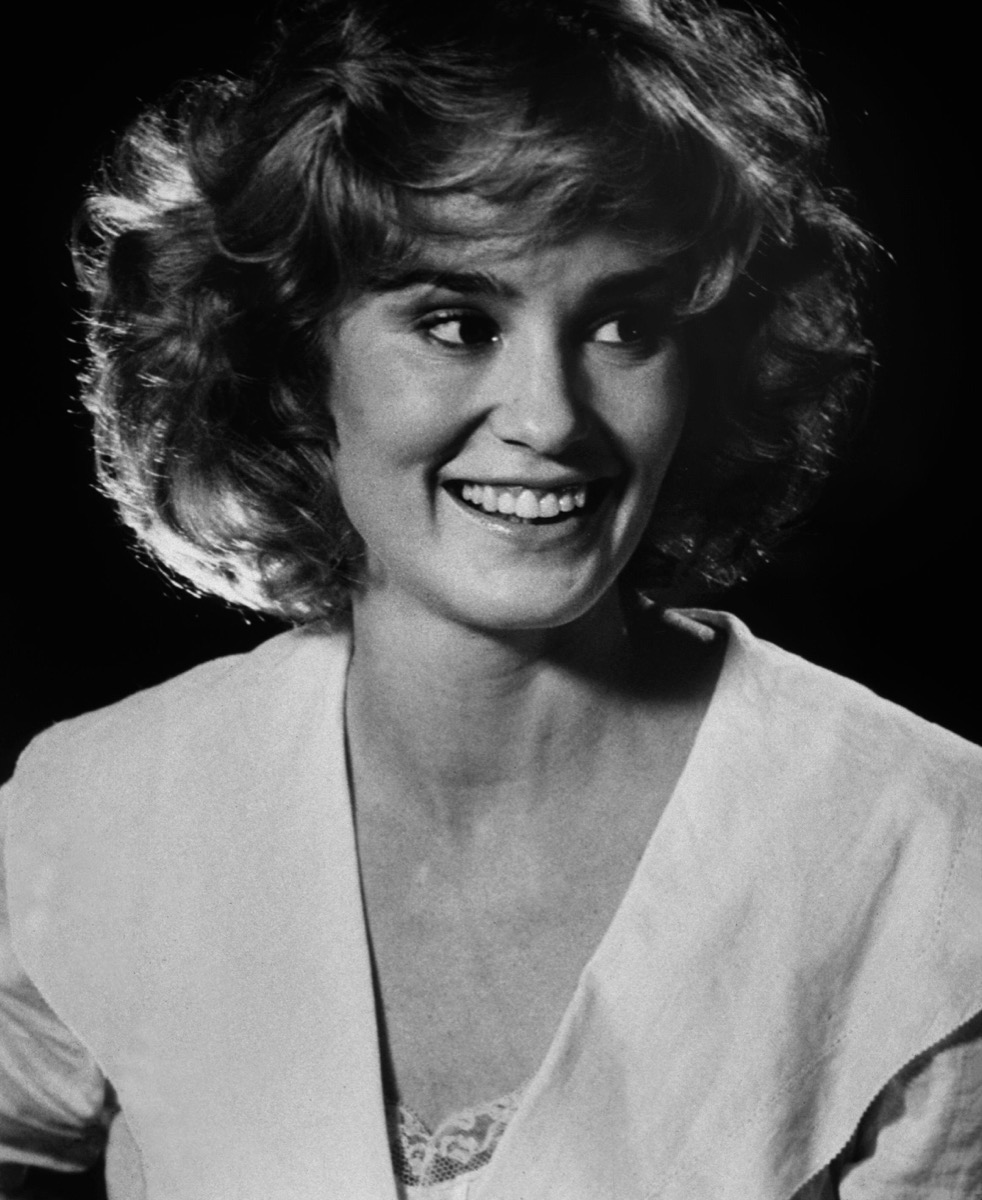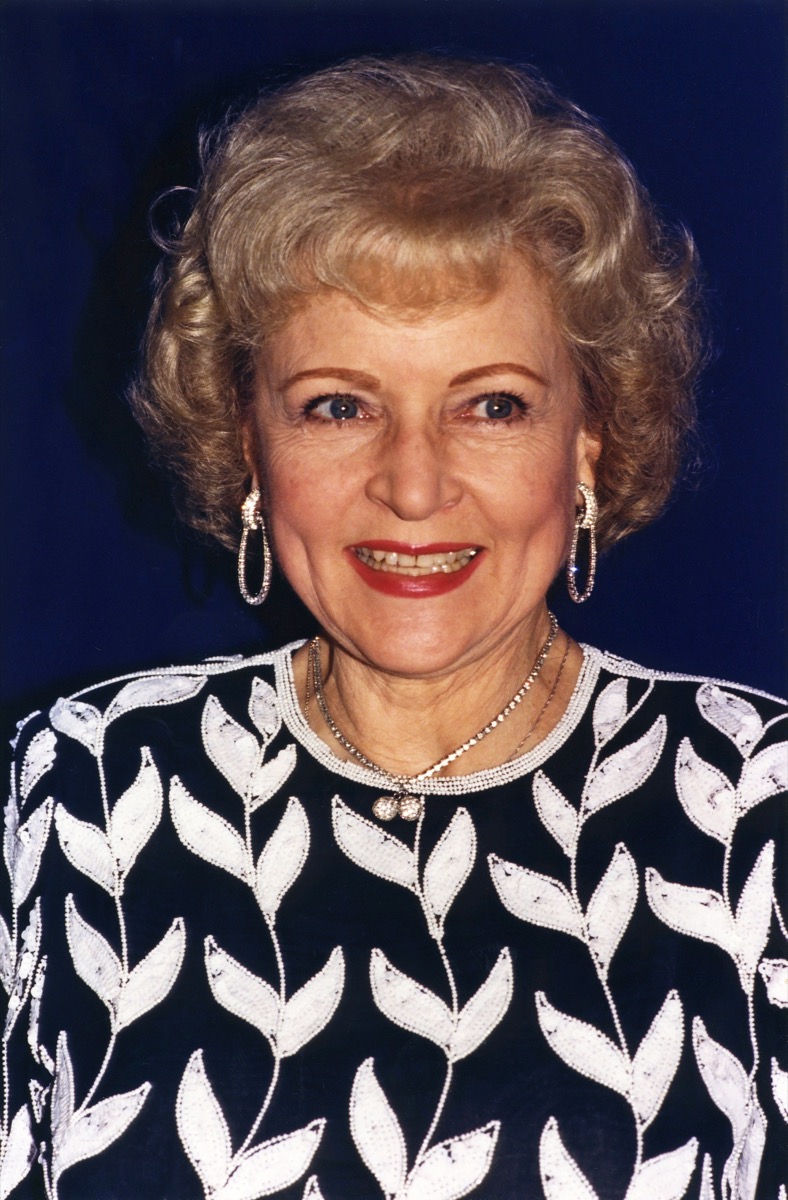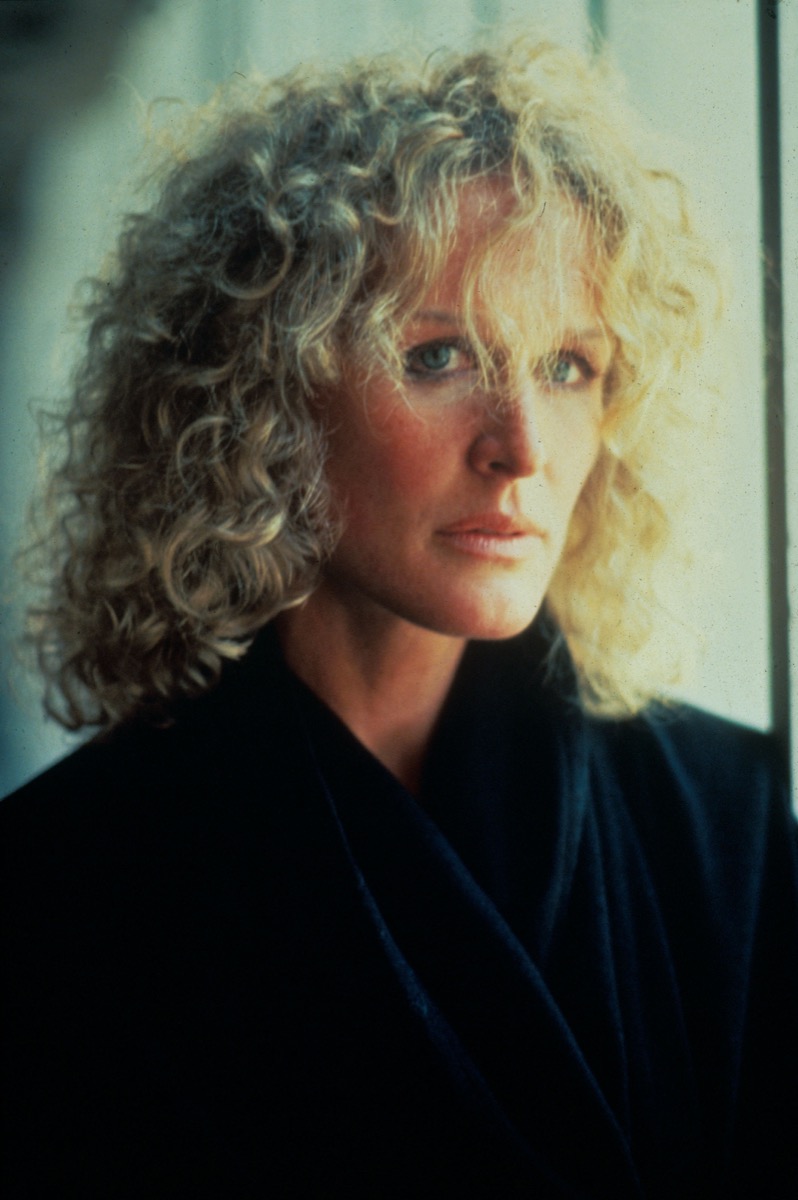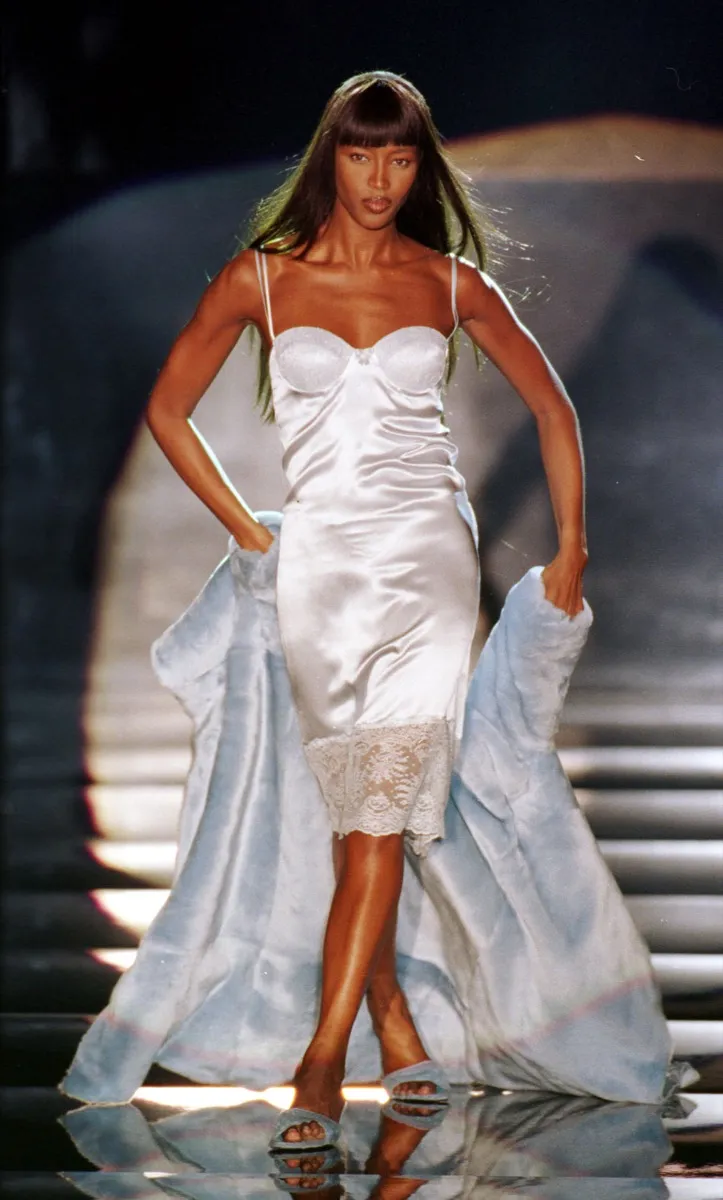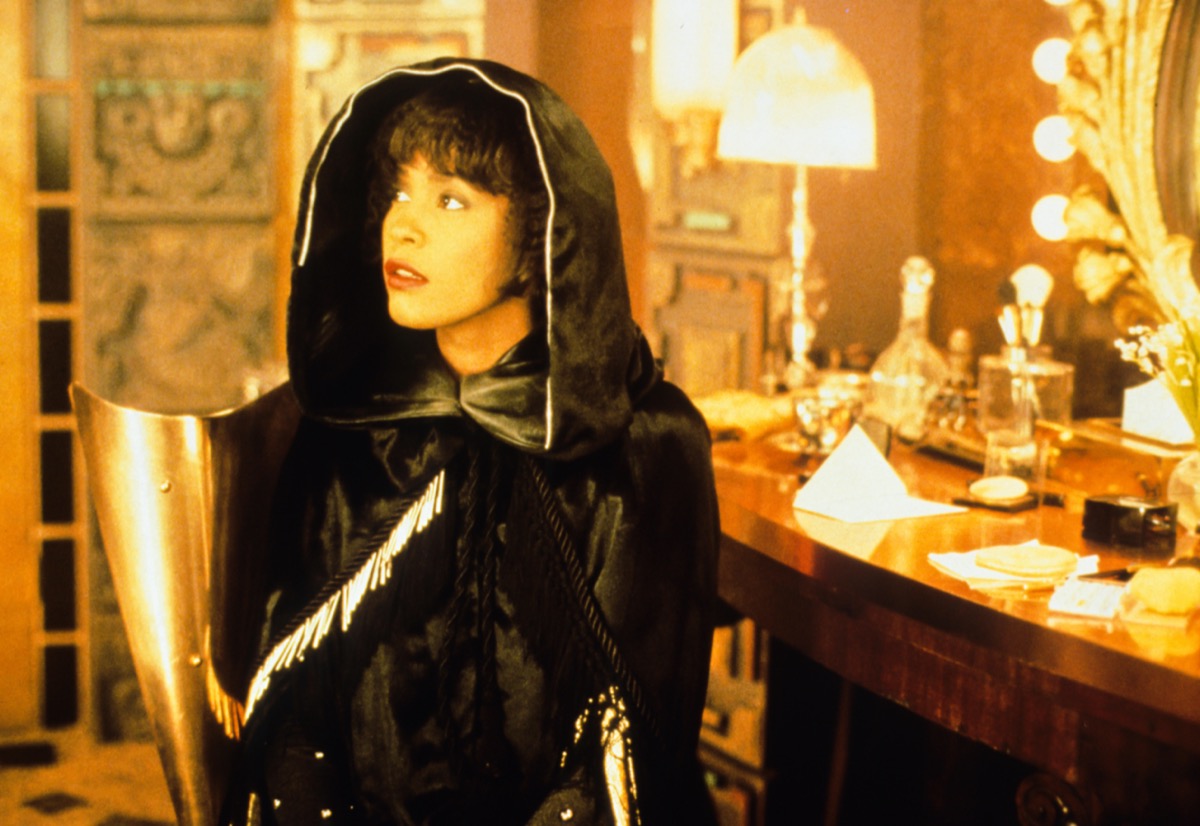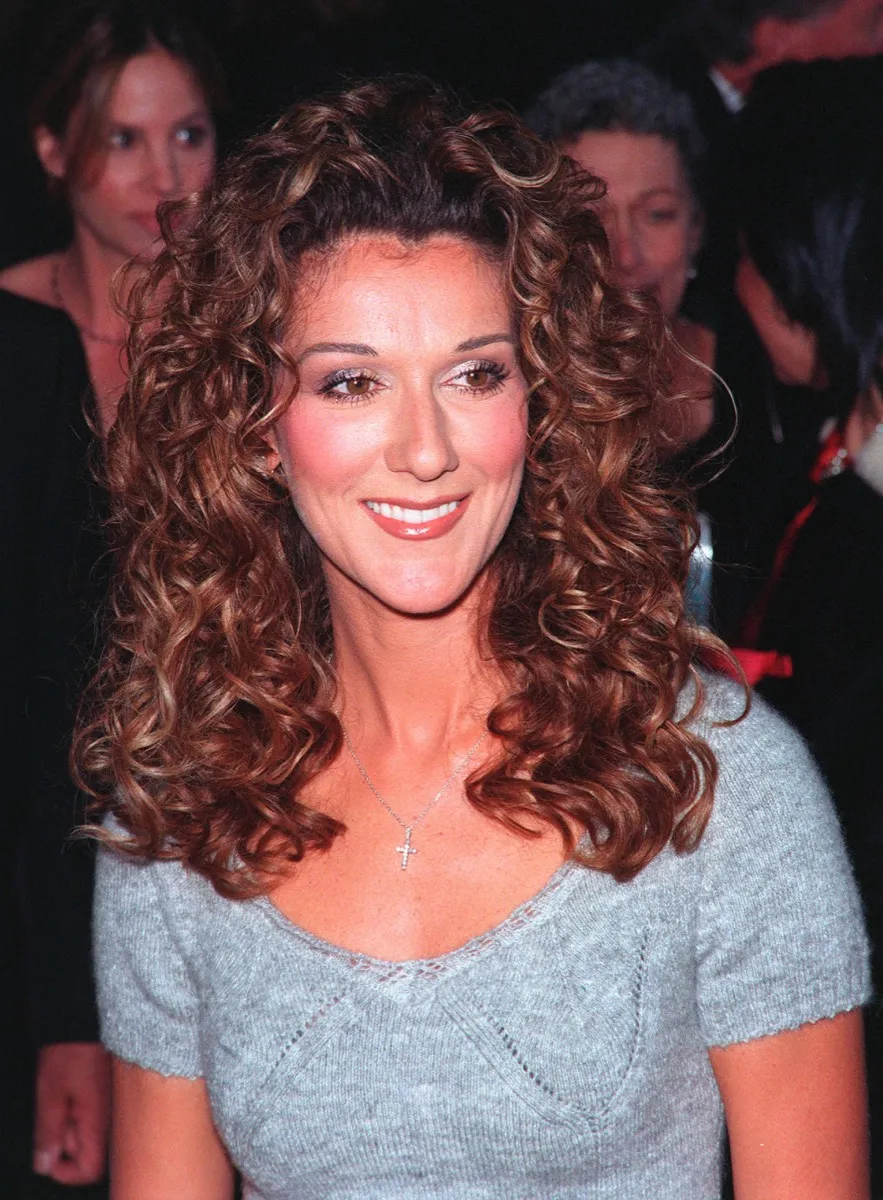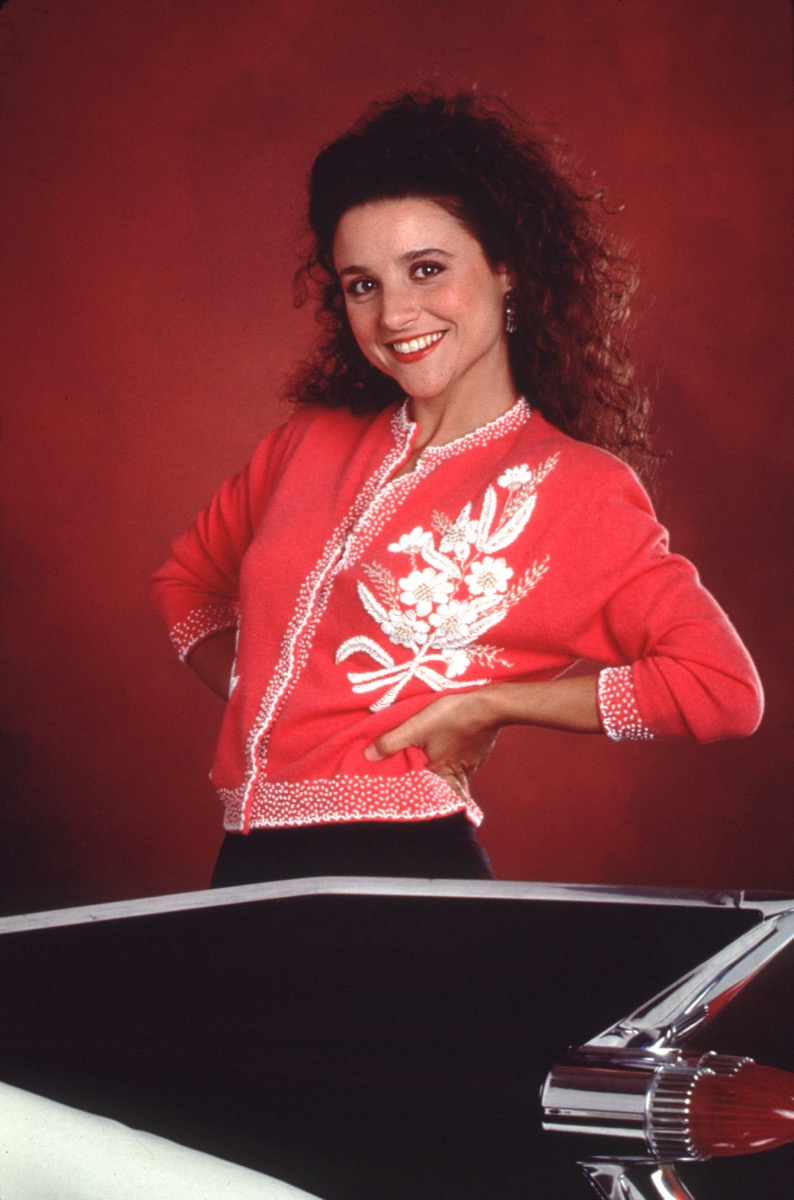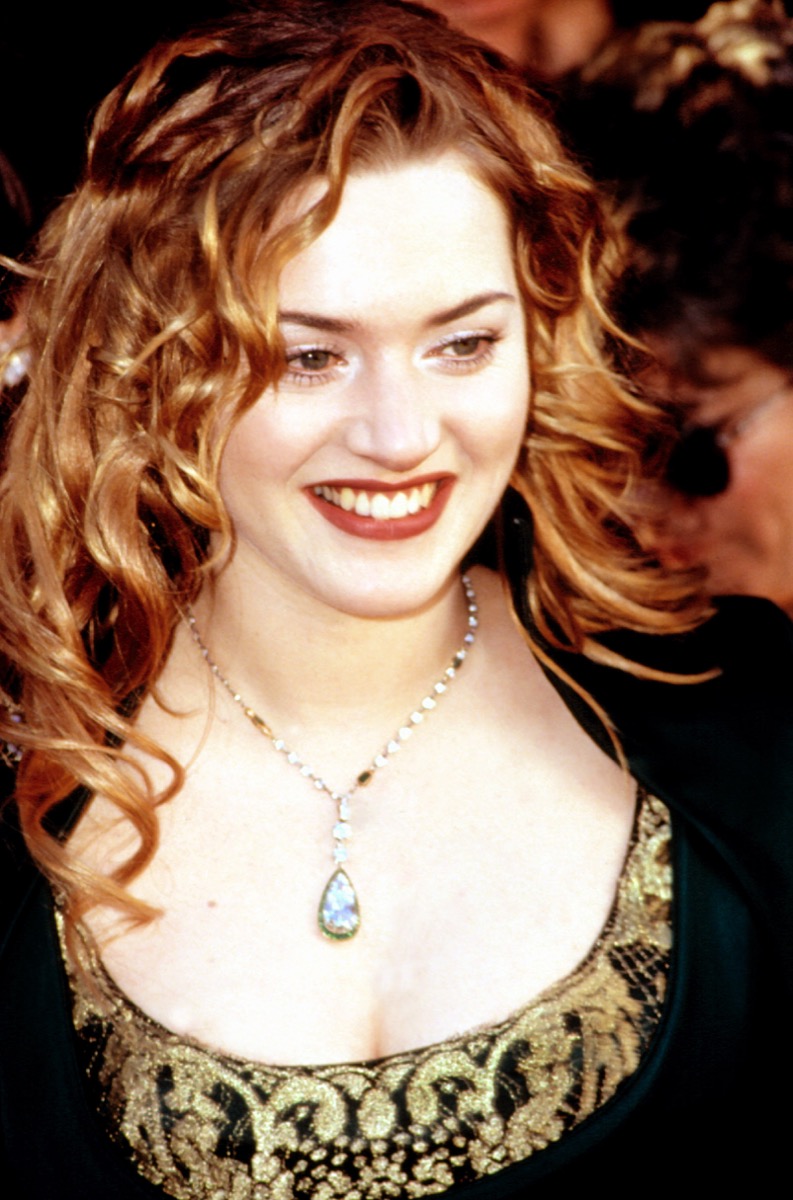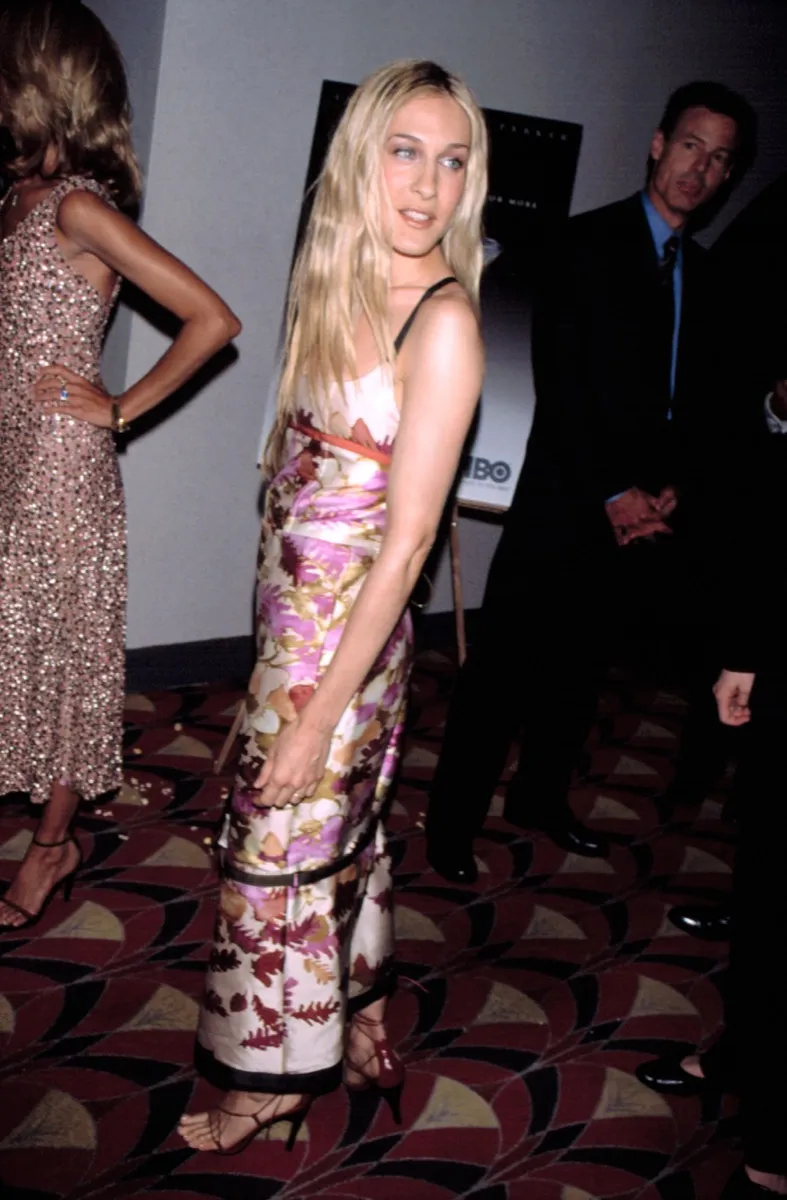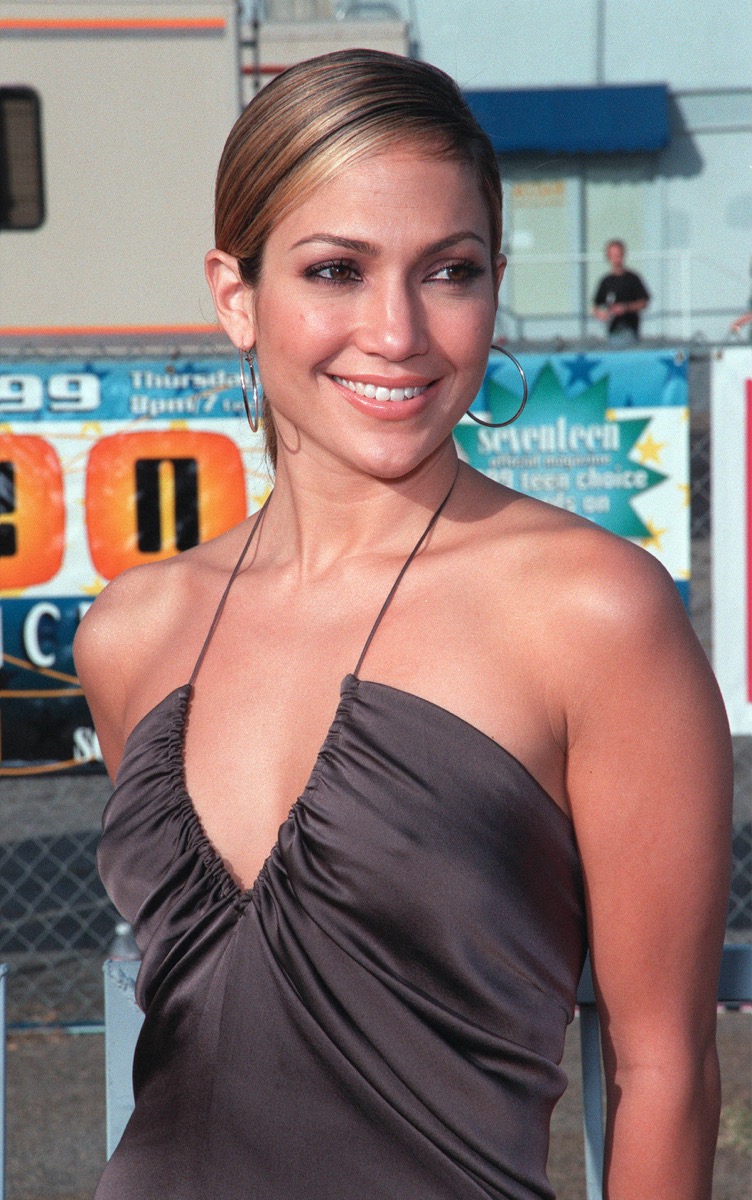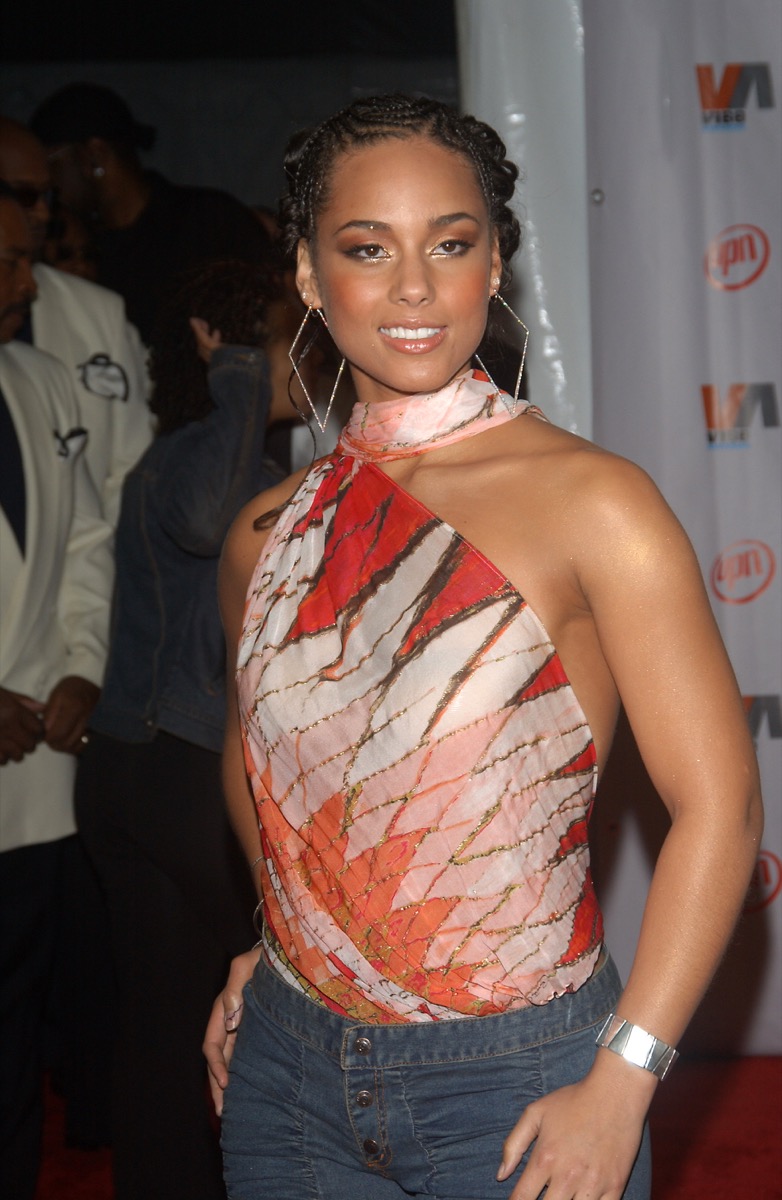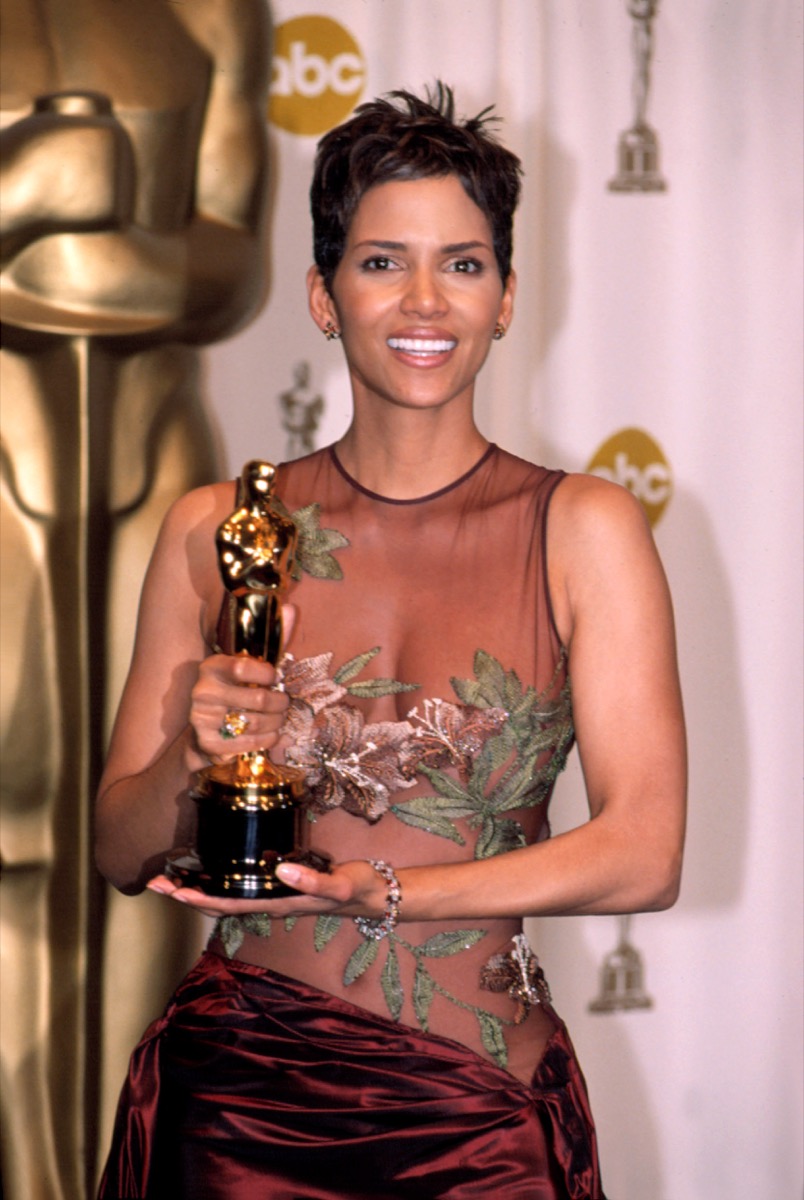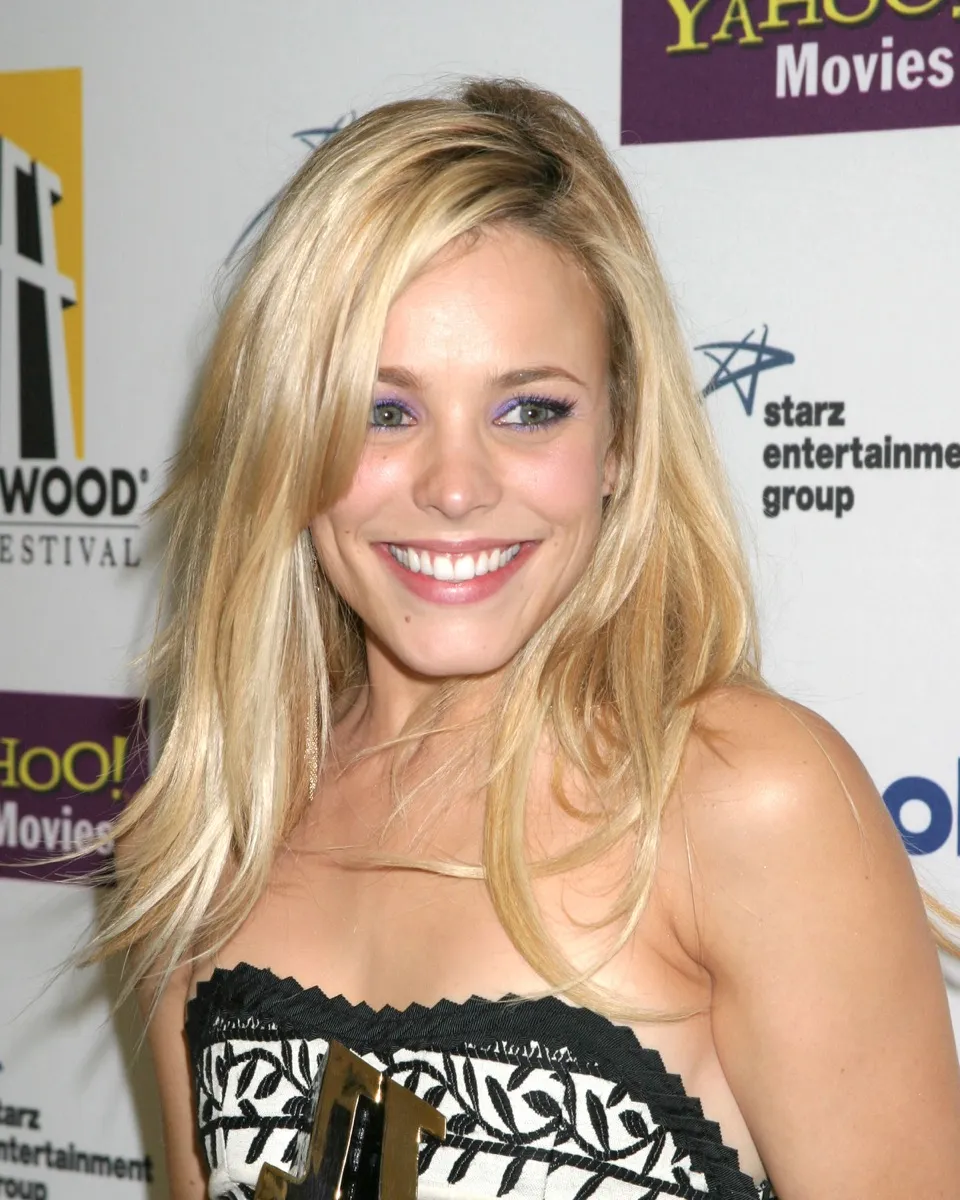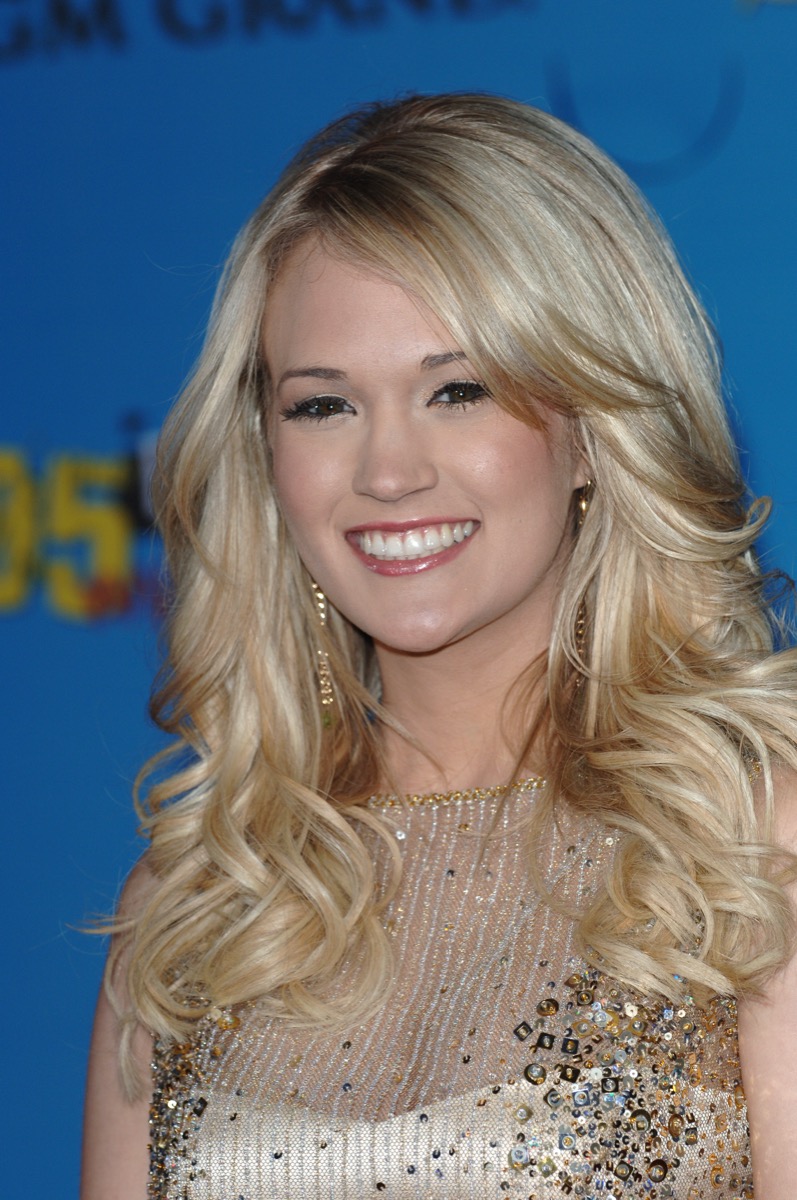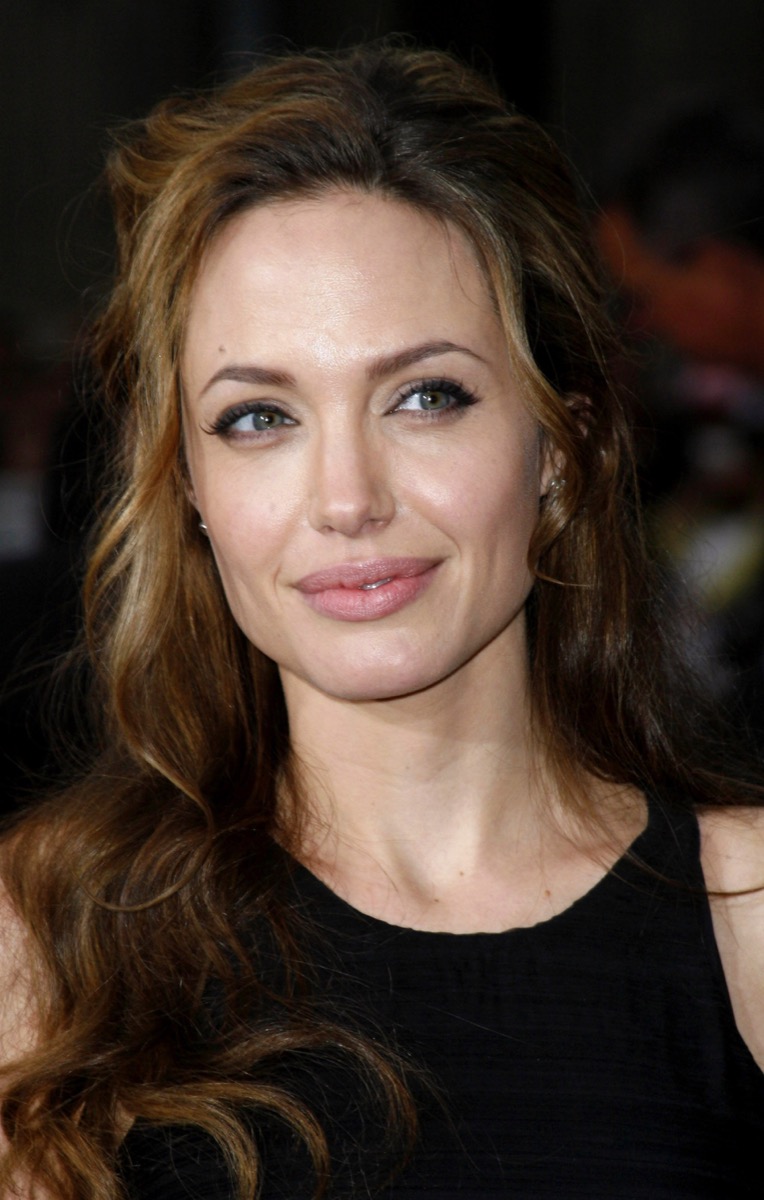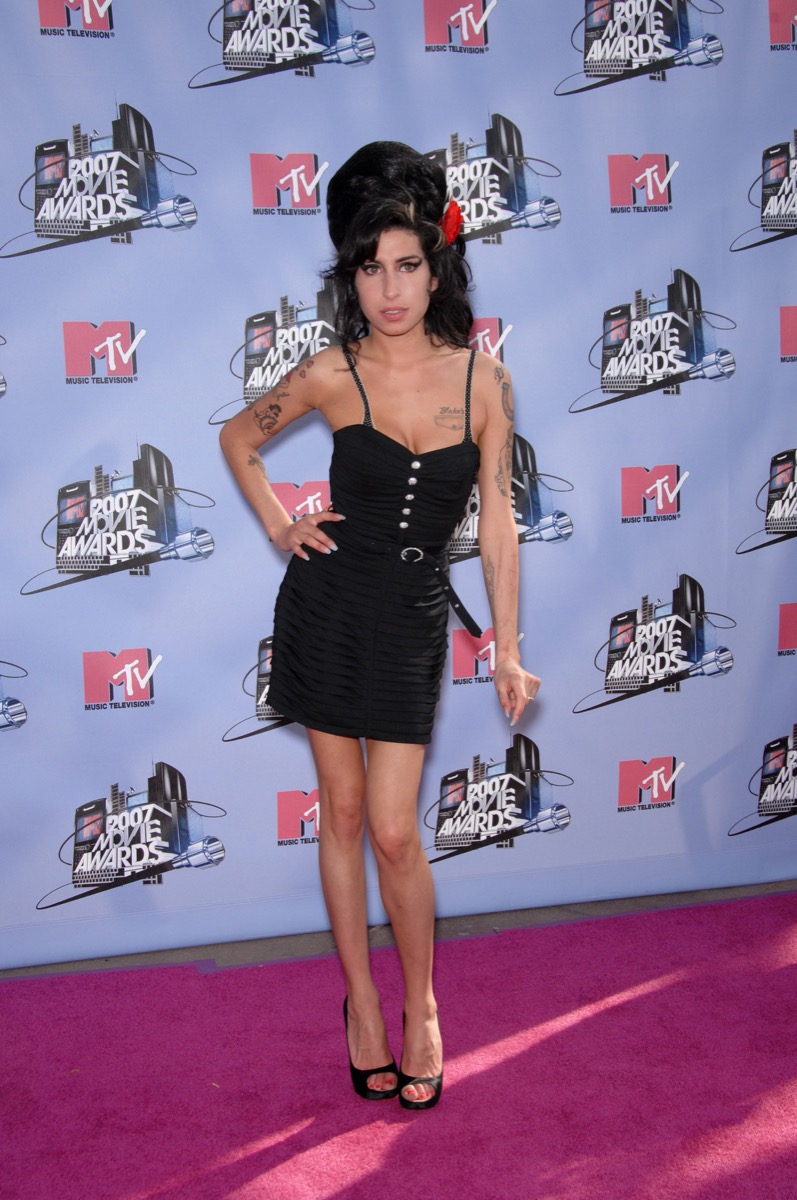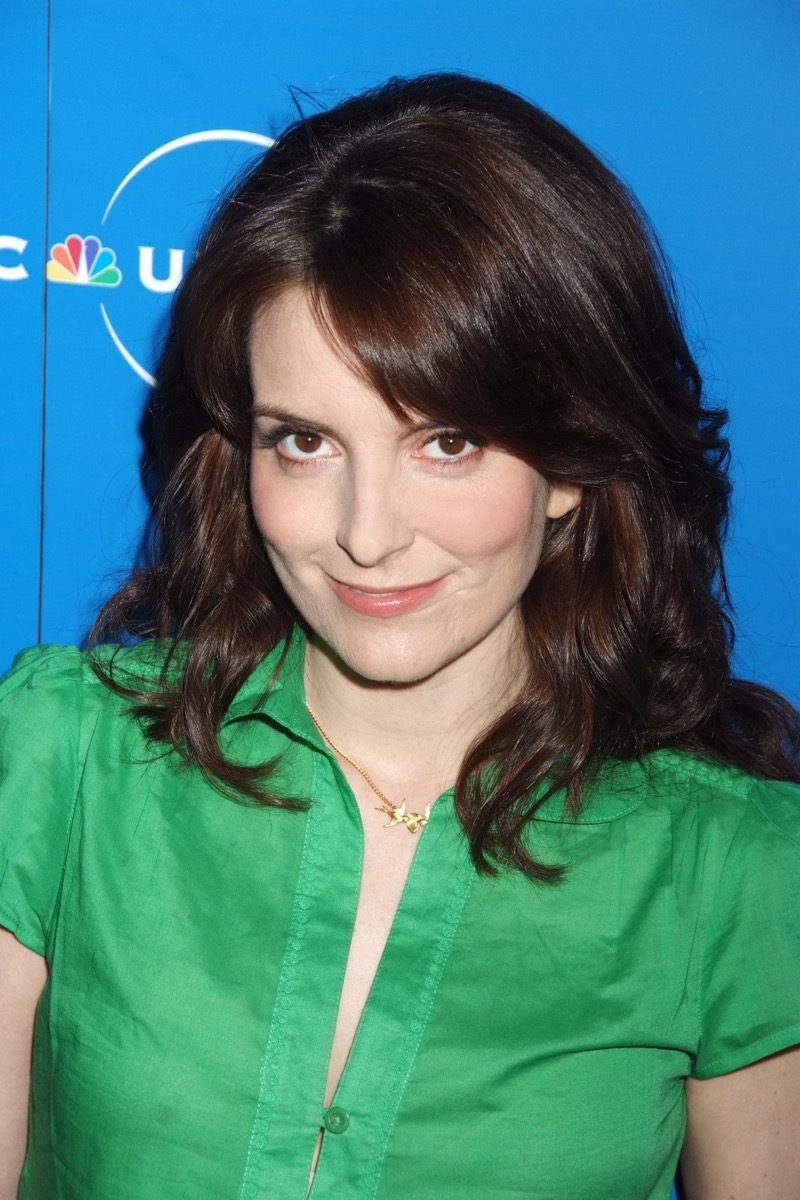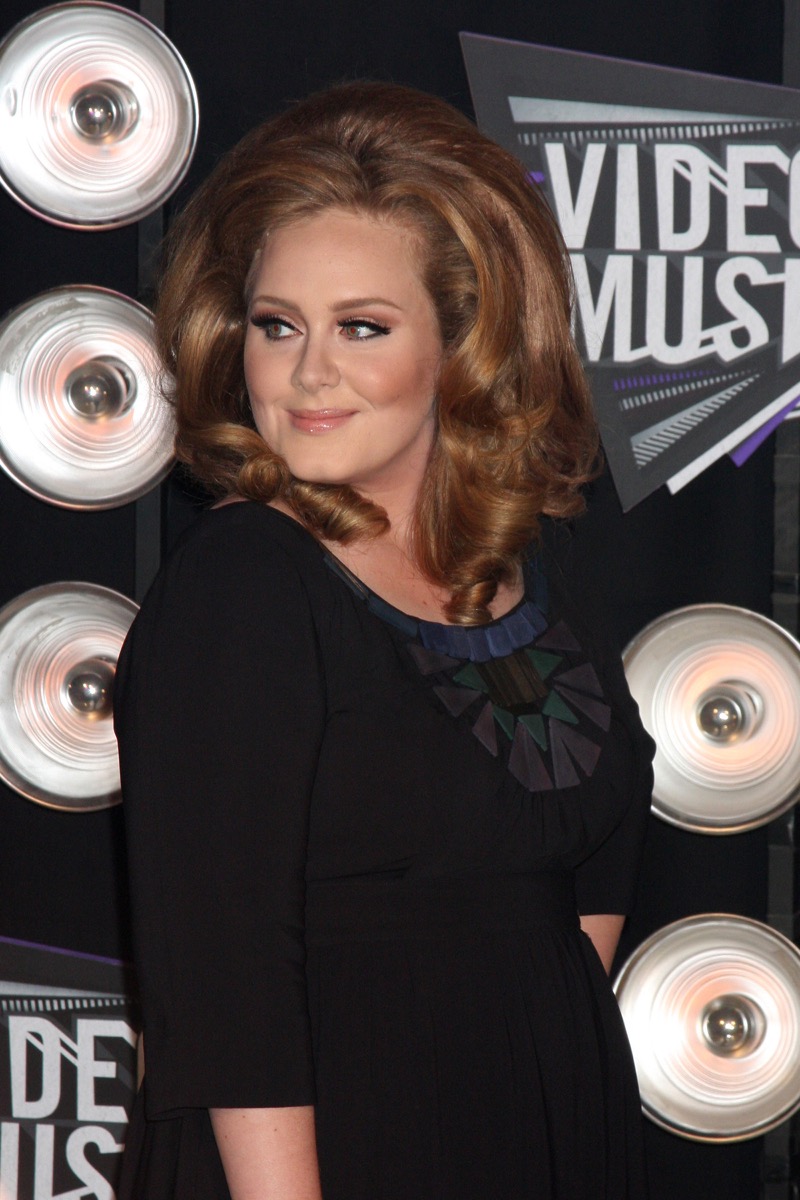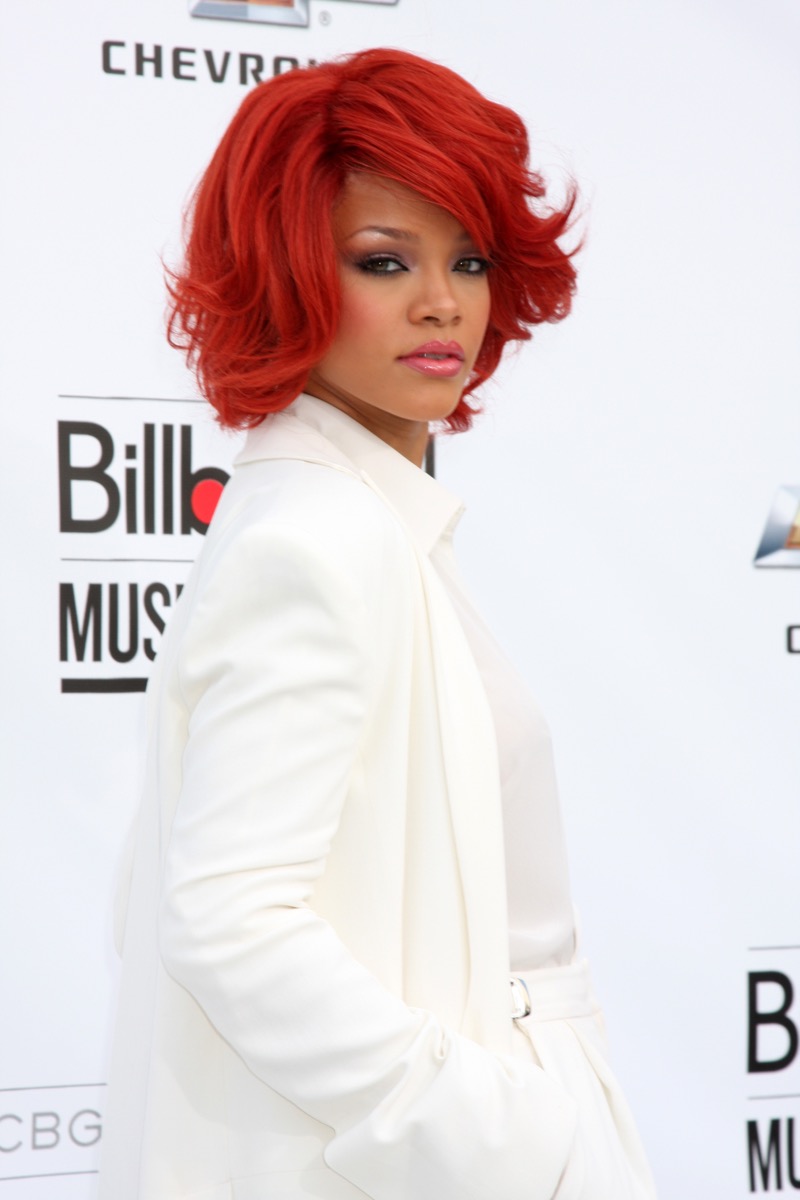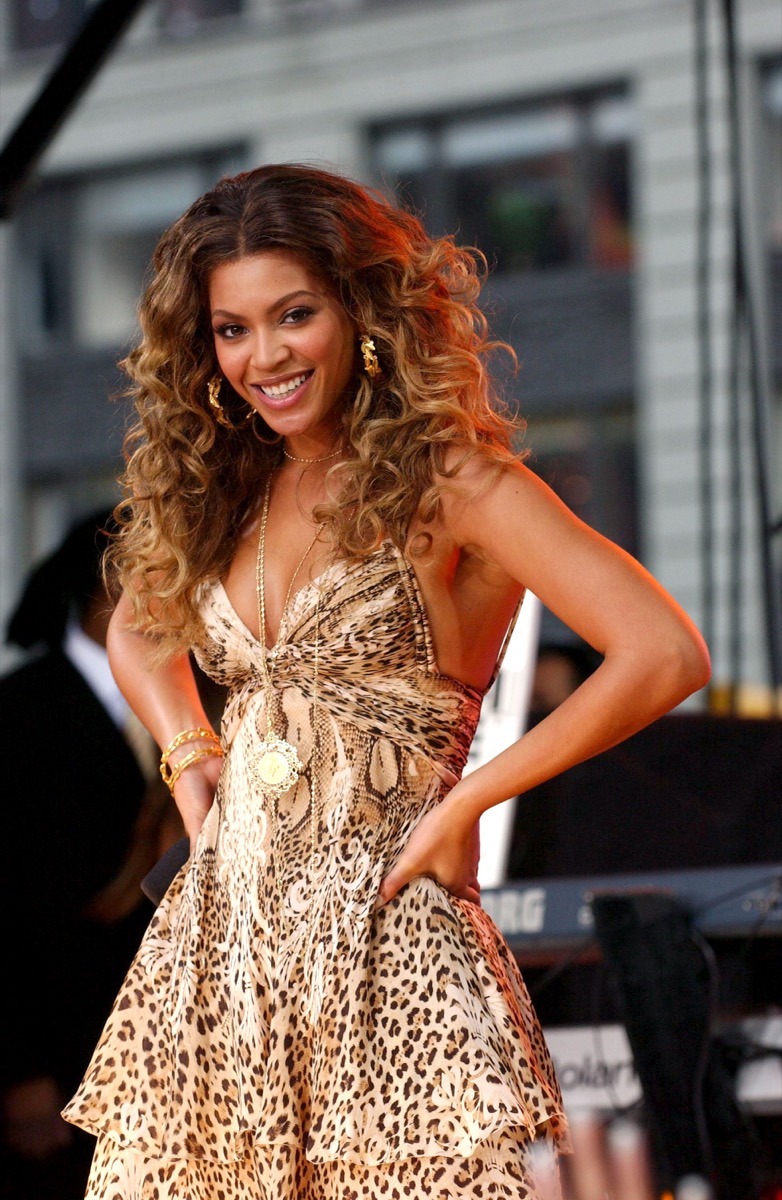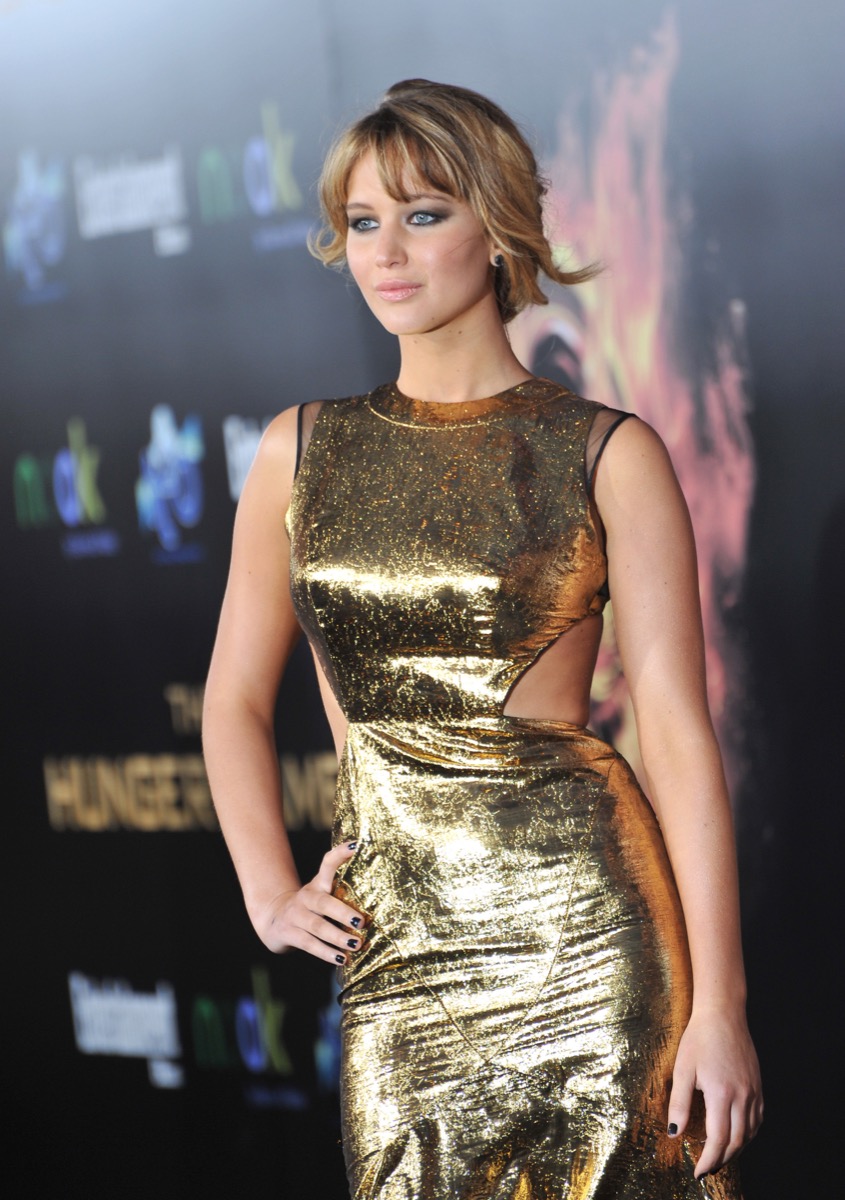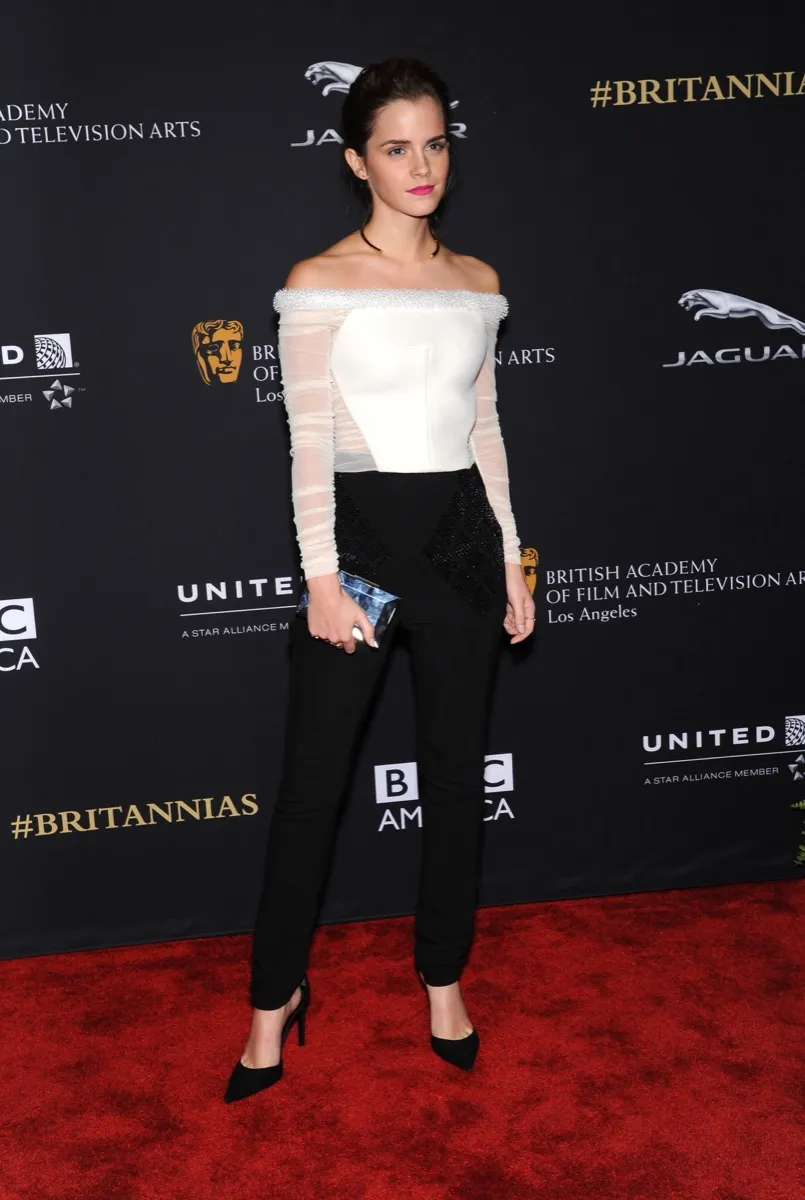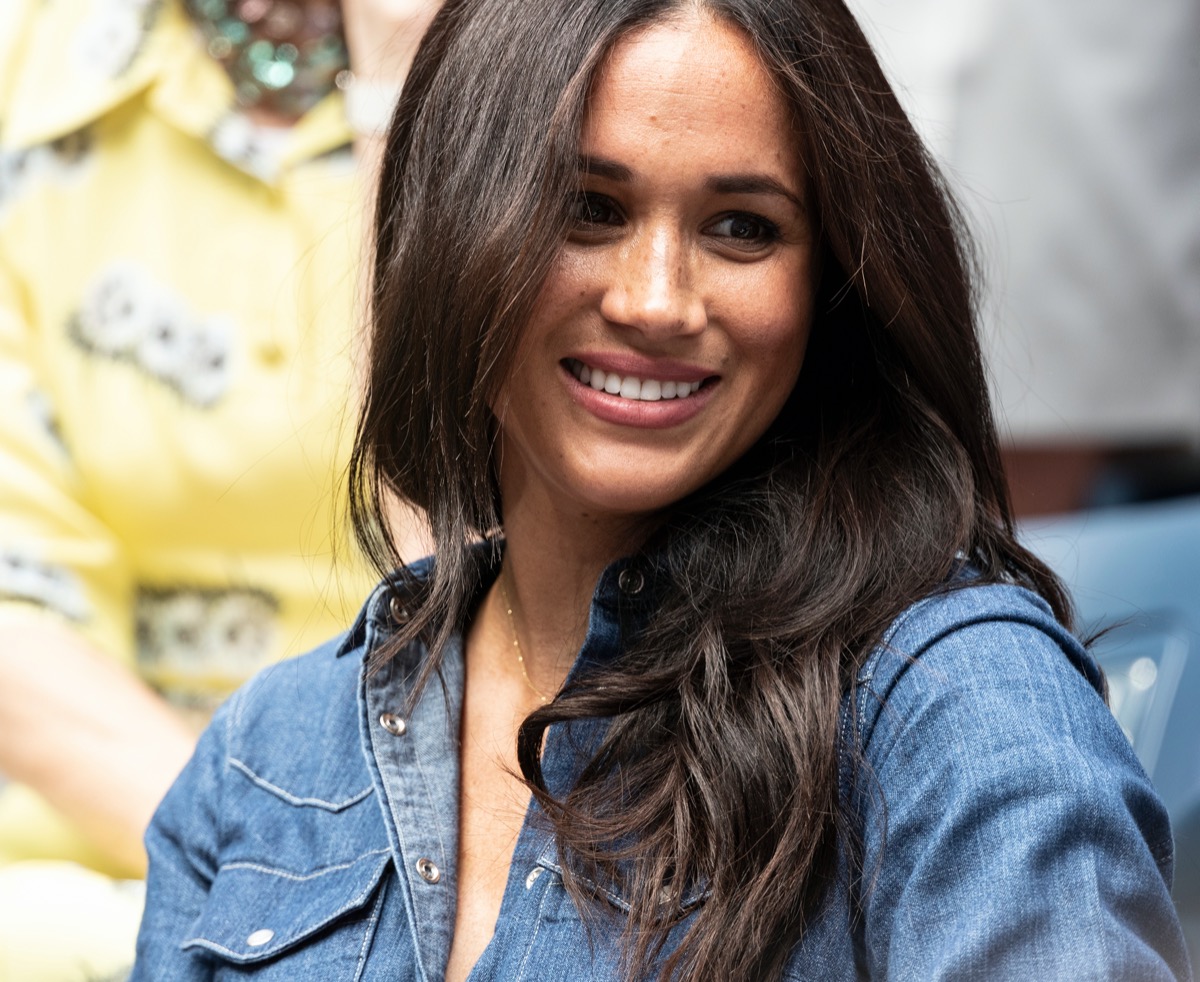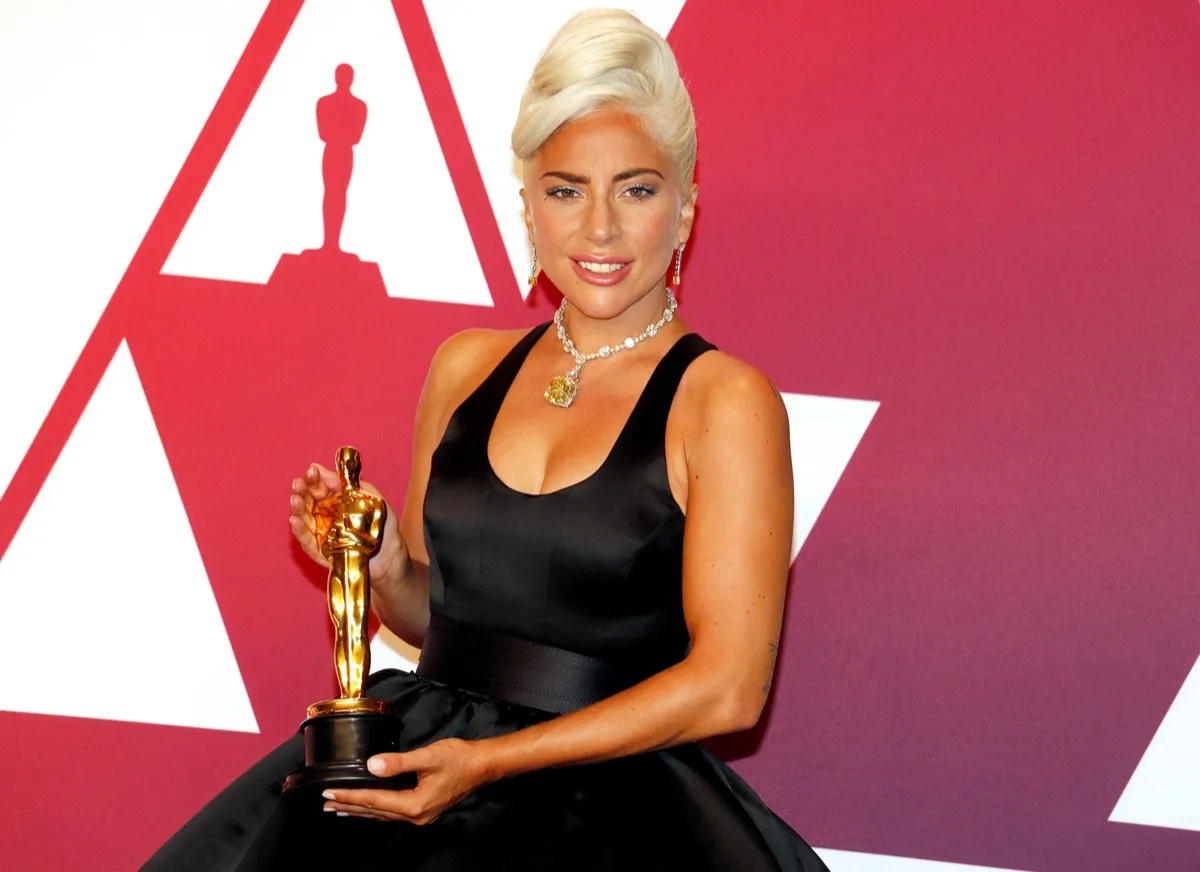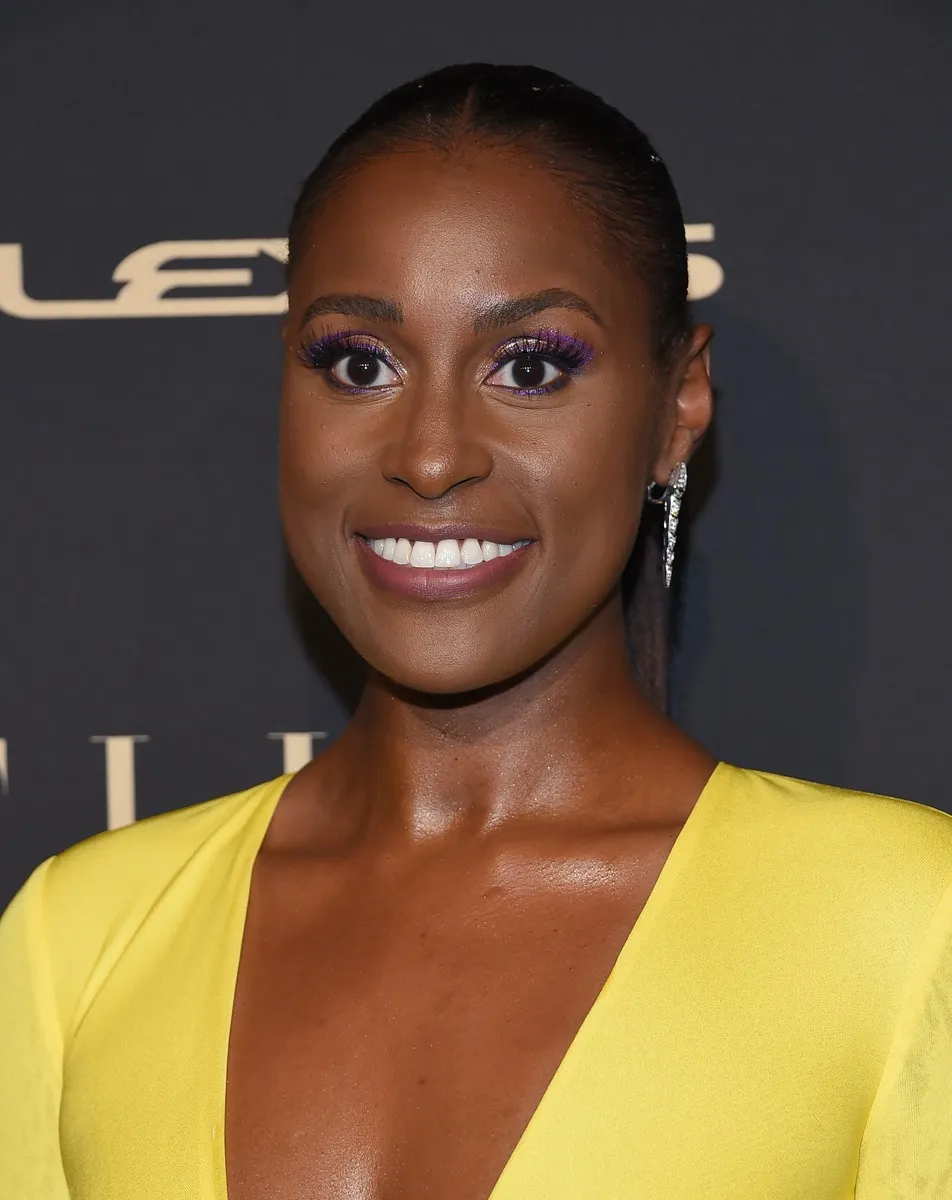RELATED: The Biggest Male Icon Every Year Since You Were Born. When it comes to pop culture royalty of 1940, Katharine Hepburn was the queen. It was in that year that, following several box office flops, the actor staged her comeback by getting the rights to and starring in The Philadelphia Story alongside Cary Grant. In 1941, Barbara Stanwyck starred in Ball of Fire, a performance that earned her an Academy Award nomination for Best Actress. She also starred in three other movies that year: You Belong to Me, Meet John Doe, and The Lady Eve, in which she managed to “completely upstage” her co-star, Henry Fonda, according to The Guardian. The world was introduced to one of the most iconic romantic movies of all time in 1942: Casablanca. And as one of its stars, Ingrid Bergman was easily the biggest and most well-known female icon of the year. In 1943, actor and singer Lena Horne’s rendition of “Stormy Weather” from the film of the same name topped the Billboard charts. As NPR later wrote, Horne “broke down racial barriers and paved the way for many of today’s black entertainers.” Though a lot of people remember Judy Garland for her iconic role in The Wizard of Oz (1939), the actor made an equally big impact when she starred in Meet Me in St. Louis in 1944. (Who could ever forget “The Trolley Song?”) Actor Gene Tierney is perhaps most famous for her role in the 1945 drama Leave Her to Heaven, which earned her an Oscar nomination. As The Chicago Tribune puts it, “Tierney will always be remembered for two signature roles: the eponymous ‘Laura’ in Otto Preminger’s 1944 murder mystery and the pathologically jealous Ellen Berent in John M. Stahl’s Leave Her to Heaven.” American actor Lauren Bacall first appeared on the big screen in 1944’s To Have and Have Not, which is how she met and fell in love with Humphrey Bogart. But it was her 1946 film The Big Sleep—which also starred Bogart, whom she married in 1945—that helped solidify her place in the film noire genre. Olivia de Havilland appeared in nearly 50 feature films throughout her career. But in 1947, she really made her mark, winning her first Oscar for Best Actress, thanks to her performance in To Each His Own. Singer Margaret Whiting landed on the Billboard Top 100 in 1948 with “A Tree in the Meadow,” which quickly became the song of the summer, spending July and August topping the charts. Though Jane Wyman starred in movies all throughout the ’30s and ’40s, it wasn’t until Johnny Belinda that the actor really became an icon, taking home the Oscar for Best Actress in 1949. Bette Davis’s most famous film is easily the 1950 drama All About Eve. As cinematic history buff Roger Leslie wrote in Oscar’s Favorite Actors: The Winningest Stars (and More Who Should Be), “That role started a run of four consecutive Oscar nominations that kept her a dominating presence of the Oscars throughout the first half of the 1950s.” In 1951, Leslie Caron starred alongside Gene Kelly in An American in Paris. The musical film was an enormous success and Caron was a huge part of that. As Bosley Crowther of The New York Times wrote, the movie “takes on its own glow of magic when Miss Caron is on the screen.” The 1952 classic Singin’ in the Rain made Debbie Reynolds a household name. She captured America’s hearts and made rainstorms a little bit more fun for years to come. The early ’50s belonged to Brigitte Bardot. In 1952, she starred in the French film Manina, the Girl in the Bikini at just 17 years old, and in 1953, she made her debut at the Cannes Film Festival in a two-piece swimsuit, which was considered quite scandalous at the time. For more celebrity trivia sent right to your inbox, sign up for our daily newsletter. The 1954 spot belongs to actor and fashion icon Ava Gardner. It was in that year that she starred in The Barefoot Contessa alongside Bogart, following her first Academy Award nomination for her work in Mogambo. Does Marilyn Monroe’s idol status really need any explanation? We’re calling her out here for her role in 1955’s The Seven Year Itch, but the model, actor, and singer certainly made an impact all throughout the ’50s and beyond. Grace Kelly left a lasting legacy in the worlds of film, fashion, and pop culture in general. In 1956, when she married Prince Rainier III and became the princess of Monaco, all eyes were truly on her. Actress Lucille Ball’s hit television show I Love Lucy premiered in 1951 to rave reviews. According to Lifetime, “for four of its six seasons, I Love Lucy was the most-watched show on TV,” and the series made Ball and Desi Arnaz “the first millionaire TV stars in history.” In 1958, at just 25 years old, Nina Simone released her debut album, Little Girl Blue, via Bethlehem Records. In addition to marking the beginning of a long and lucrative career for Simone, the album “set the benchmark for female singers and pianists,” as NME explained. As The New York Times puts it, Jane Wyatt was “America’s ideal suburban mom during the 1950s,” thanks to her starring role on Father Knows Best. But toward the end of the decade, Wyatt truly reigned supreme, winning Emmys for Lead Actress in a Comedy Series in 1958, 1959, and 1960. In 1960, legendary singer Ella Fitzgerald took home two Grammy awards at the inaugural ceremony, including Best Female Vocal Performance Album for Mack the Knife: Ella in Berlin. Her only single to crack into Billboard’s Top 40 was her cover of the title track, which reached No. 27 in 1960. Who hasn’t envisioned themselves walking by a glitzy storefront in New York City with a pastry and coffee in hand? Of course, that vision of elegance and class is all thanks to Audrey Hepburn’s iconic performance in the 1961 film Breakfast At Tiffany’s. In 1962, First Lady Jackie Kennedy was at the peak of her icon status. While her husband was busy running the country, Kennedy was giving televised tours of the White House, taking glamorous international trips to meet with foreign officials, and, of course, making fashion history with her Oleg Cassini numbers. Julia Child and French cooking have become synonymous with each other, which is largely thanks to Child’s cookbook, Mastering the Art of French Cooking, along with her television show, The French Chef, which made its debut in 1963. In 1964, record producer Berry Gordy made Diana Ross the lead singer of The Supremes, and the rest is definitely history. With Ross at the helm, the girl group released five back-to-back chart-topping singles, including “Where Did Our Love Go?” and “Baby Love” in ‘64 and “Stop! In the Name of Love” in ‘65. Julie Andrews took on the unforgettable role of Maria von Trapp in The Sound of Music in 1965 and she also won the Best Actress Oscar for her performance in Mary Poppins that same year. To say everything was coming up Andrews in 1965 is an understatement. In 1966, Raquel Welch starred in One Million Years B.C. and made a lasting impression—not just with her acting chops, but also with her unmatchable sex appeal. The skimpy, fuzzy two-piece she donned in the film is one of the most famous bikinis of all time. In 1967, Aretha Franklin released not one, not two, but three studio albums: Take It Like You Give It, I Never Loved a Man the Way I Love You, and Aretha Arrives. The year birthed numerous chart-topping singles for the Queen of Soul, including “Respect” and “(You Make Me Feel Like) A Natural Woman.” Jane Fonda’s role in the 1968 film Barbarella made her an up-and-comer truly worth watching in Hollywood. In fact, the following year, she received her very first Oscar nomination for her role in They Shoot Horses, Don’t They? Gloria Steinem—social activist, writer, editor, and champion of women’s rights—published one of her most iconic works, “After Black Power, Women’s Liberation,” in 1969. In a statement reflecting on the legendary New York Magazine essay, Steinem said, “That was my first big moment of ‘Aha!’ … For me, that was the beginning.” An undeniable icon both on the runway and on the big screen, Ali MacGraw truly gained international fame when she appeared in the 1970 film Love Story alongside Ryan O’Neal. The performance earned MacGraw an Academy Award nomination for Best Actress and won her the Golden Globe for Best Actress in a Motion Picture—Drama. In 1971, The Mary Tyler Moore Show was nominated for eight Emmy awards for its inaugural season, a testament to just how popular the series and its star were. In the years that followed, Mary Tyler Moore herself would continue to earn nominations and accolades for portraying a single, independent woman on primetime TV that others looked up to. In 1972, The Sonny & Cher Comedy Hour was one of the most popular shows on television. In fact, it was originally supposed to be just a summer replacement series, but after CBS execs saw how high the ratings were, they decided to make it a permanent fixture. The show brought Cher back into the limelight following a failed attempt at breaking into the movie industry and she’s been on top ever since. Supermodel Lauren Hutton isn’t just iconic for her sense of style—she was also instrumental in demanding fairer pay for female models. In 1973 specifically, “she was the first to demand a contract, scoring a $250,000 deal with Revlon that overnight changed the way models were compensated,” W magazine noted. The year 1974 was a good one for Barbra Streisand. The singing sensation had a No. 1 hit with “The Way We Were,” the theme song of the movie of the same name in which she also starred. At the 1974 Academy Awards, the song won an Oscar, and Streisand was nominated for Best Actress. Natalie Cole kicked off the 1975 Grammys with a performance of “This Will Be (An Everlasting Love),” the song that would earn her Best Female R&B Vocal Performance later that evening. Cole also left the Grammys in ‘75 with the award for Best New Artist. It was certainly her year. The James Bond movies may be all about 007, but it was Barbara Bach who stole the show as Bond girl Anya Amasova in 1977’s The Spy Who Loved Me. As a result, Bach became a fashion icon and a sex symbol. Olivia Newton-John was the one everyone wanted—or wanted to be—in 1978. As Sandy in Grease, which took over the box office that year, she simultaneously showcased her acting and singing skills as one of the most memorable characters of all time. In 1979, music icon Donna Summer released her seventh studio album album, Bad Girls. The album—which featured the hit title track, along with songs like “Dim All the Lights” and “Hot Stuff”—eventually became the best-selling album of her career. How many times have you sat at your desk singing the words to Dolly Parton’s classic “9 to 5?” The song—from the 1980 women’s equality film of the same name, which Parton starred in alongside Jane Fonda and Lily Tomlin—is truly legendary. The movie solidified the fact that Parton was more than just a singer-songwriter. It’s hard to remember a time when we weren’t looking up to the late Princess Diana—known as the People’s Princess for her icon status and her humanitarian efforts. But 1981 was when she was at the height of her fame, thanks to her wedding of the century to Prince Charles. RELATED: How Old 100 Iconic Stars Would Be If They Were Alive Today. Perhaps one of the most outstanding and iconic actors of all time, Meryl Streep made it big in 1982 when she starred in Sophie’s Choice, earning critical acclaim for her performance as Holocaust survivor Sophie Zawistowski. The starring turn won her the Best Actress award at the 1983 Oscars, a first for Streep, who had previously won Best Supporting Actress for 1980’s Kramer vs. Kramer. Ask anyone who lived through the ’80s what they best remember Jessica Lange for, and they’ll quickly tell you that it’s the 1982 film Tootsie. Though she wasn’t the star of the film, her supporting role as a soap opera star was enough to earn her her first Academy Award in 1973. In 1984, Shirley MacLaine took home the award for Best Actress at the Academy Awards for her part in Terms of Endearment. Though she had been nominated several times before, this was the first time she actually took home an Oscar. With singles like “Material Girl” and “Into the Groove” topping the charts and a starring role in Desperately Seeking Susan, Madonna was everywhere in 1985. In their May issue that year, SPIN profiled the singer, calling her “Marilyn Monroe and Joan Crawford reincarnate.” When it comes to icons, Betty White was something of a late bloomer. Though she’s been a prominent figure in Hollywood since the ’40s, her real icon status came in 1986. That’s when The Golden Girls was becoming a big hit and when the actor won an Emmy for her role on the sitcom. (She previously had won two Emmys for her supporting role on The Mary Tyler Moore Show, but this was her first as a leading lady.) You weren’t a kid in the late ’80s if you don’t remember Nancy Reagan telling you to “Just Say No” to drugs. The slogan—and Reagan—were inextricably tied to the decade. But it wasn’t just the First Lady who was campaigning against illegal substances; in 1987, La Toya Jackson also became a spokesperson for the campaign and released an anti-drugs song aptly called “Just Say No.” Actress Glenn Close’s most iconic performance to date is the one she took on in 1987’s Fatal Attraction and was nominated for an Oscar for in 1988. (Her fourth nod.) As The Guardian explains, “This is Close’s number one role, the one she turned into a cultural icon, the ultimate nemesis, every straying man’s worst nightmare, and the character who donated the phrase ‘bunny boiler’ to the English language.” In 1989, The Oprah Winfrey Show was just a few years old. But even then, Oprah Winfrey—the show’s namesake—was doing what she does best: inspiring people to live their best lives. That year, The New York Times published an article called “Oprah Winfrey’s Odyssey: Talk-Show Host to Mogul,” solidifying her as the queen of much more than daytime television. Sure, people knew who Julia Roberts was before 1990 (thanks to Mystic Pizza and Steel Magnolias). But it wasn’t until the ’90s kicked off that she truly established herself as a force to be reckoned with in Hollywood. After all, 1990 is the year Pretty Woman was released, transforming Roberts into the iconic leading lady she is today. In 1991, supermodel Naomi Campbell famously broke down racial barriers as she strutted the runway for Versace, mouthing the words to George Michael’s “Freedom! ‘90.” That same year, Campbell starred in Michael Jackson’s music video for “In the Closet,” proving she had more than a killer runway walk. It’s hard to say one chart-topping year for Whitney Houston is more iconic than the next. But we’d make a case that 1992 was her year, thanks to her performance in The Bodyguard and the hit song that emerged from it: her cover of Dolly Parton’s “I Will Always Love You.” According to Billboard, the track spent 14 weeks at the top of the Hot 100 chart, making it one of the longest-running No. 1 singles in history. Celine Dion, an obvious music icon, released her album The Colour of My Love in 1993, which includes the song “The Power of Love,” which helped her become a mainstream success. When Friends premiered in 1994, it quickly became one of the most popular television shows of the time—and none of the cast members were as adored as Jennifer Aniston, who inspired the decade’s most iconic haircut. Mariah Carey was the true queen of 1995. That’s when she released her album Daydream, which included “Fantasy” and “One Sweet Day,” both of which were top hits that year. Seinfeld, co-starring Julia Louis-Dreyfus, was at its peak in 1996, bringing in more than 35 million viewers each week. The iconic comedy series drew major attention to Louis-Dreyfus and her talent. If you didn’t want to date Elaine, you wanted to at least be as cool as her (dance moves included). The movie that made Kate Winslet the star she is today is undoubtedly James Cameron’s 1997 film Titanic. It earned more than $2 billion at the box office, and put Winslet on the radar of moviegoers and Hollywood tastemakers alike. To many of us, Sarah Jessica Parker will always be advice columnist Carrie Bradshaw of Sex and the City fame. The HBO series, which premiered in ‘98, gave women a group of friends that they could laugh with, cry with, relate to, and aspire to dress like. In 1999, Jennifer Lopez released her debut album On the 6 and it was an immediate smash. Its biggest hit, “If You Had My Love,” ended up taking the No. 1 spot on the Billboard Hot 100 list and remained there for five weeks. That’s no small feat for “Jenny from the Block!” Lucy Liu got her big break in Hollywood when she started starring on Ally McBeal in 1998. Then in 2000, the actress truly became iconic when she played one of three leading ladies in the Charlie’s Angels feature reboot alongside Cameron Diaz and Drew Barrymore. Liu helped pave the way for Asian American actors and actresses to win leading roles in major movies and TV shows. In 2001, the Grammys named Alicia Keys Best New Artist, but that wasn’t all—the singer/songwriter also took home the award for Song of the Year for her hit “Fallin.’” Not bad for a newbie! In 2002, Halle Berry became the first Black woman to win the Academy Award for Best Actress for her performance in Monster’s Ball. In her speech, she said, “This moment is so much bigger than me. This moment is for Dorothy Dandridge, Lena Horne, Diahann Carroll. It’s for the women that stand beside me: Jada Pinkett, Angela Bassett, Vivica Fox. And it’s for every nameless, faceless woman of color that now has a chance because this door tonight has been opened.” In 2003, pop icon Britney Spears released one of her most famous hits, “Toxic.” Later, the single would earn Spears her first Grammy, solidifying her as not just an entertainer, but a talent to boot. When The Notebook, starring Ryan Gosling and Rachel McAdams, came out in 2004, it took over the pop culture conversation. And if that wasn’t enough, the same year saw McAdams star in the timelessly hilarious Mean Girls. It just doesn’t get any more iconic than that. Over the course of her career, Carrie Underwood has won countless awards, including a Grammy for Best New Artist. However, we’ll never forget her humble beginnings: In 2005, the then-unknown Underwood won over audiences and became that year’s American Idol champion. She’s been reigning over country music ever since. Angelina Jolie has won an Academy Award, a Screen Actors Guild Award, and a Golden Globe Award, just to name a few. And in 2006, Jolie was in the limelight—not just for these achievements, but also for giving birth to her and Brad Pitt’s oldest biological child, Shiloh. In the mid-2000s, there was simply no one more famous than Jolie. At the 50th Annual Grammys in 2007, Amy Winehouse won a staggering five awards, including Best New Artist, Record of the Year, and Song of the Year for “Rehab.” The gone-too-soon singer dominated pop culture with her huge hair and even bigger voice. While Tina Fey has made her mark in comedy over the years, we think her recurring performances as Sarah Palin on Saturday Night Live in 2008 are some of her best. Plus, that same year, Fey made her directorial debut and starred in Baby Mama alongside Amy Poehler, making her a real standout in ‘08. In 2008, Adele released her debut album, 19, which went platinum three times in the U.S. and eight times in the U.K. Then, the following year, at only 20 years old, she won her first two Grammys for Best New Artist and Best Female Pop Vocal Performance for her hit “Chasing Pavements.” The Grammys have belonged to Adele ever since. In 2010, Rihanna released her fifth studio album, Loud, and with No. 1 singles like “What’s My Name?” featuring Drake and “Only Girl (in the World),” she became one of the hottest female artists of the year and of the decade.ae0fcc31ae342fd3a1346ebb1f342fcb It’s pretty much impossible to confine Beyoncé to just one year considering how many records the legendary singer has broken. However, 2011 was especially good to Queen Bey; in that year, she released her album 4, featuring songs like “Love on Top” and “Run the World (Girls),” and announced her pregnancy on the MTV Video Music Awards (VMAs) stage. In 2012, Jennifer Lawrence became a household name when she starred in the first Hunger Games, a film adaptation of Suzanne Collins’ wildly popular book series. Katniss instantly became a role model, along with the woman who played her. You can’t deny that 2013 was the year of Miley Cyrus. If you’ll recall, this was the year that the reckless renegade released Bangerz, which featured “We Can’t Stop,” “Wrecking Ball,” and “Adore You.” It was also the year of her scandalous VMAs performance with Robin Thicke. In 2014, Emma Watson proved she was willing to use her global platform for good when she became a UN Women Goodwill Ambassador, launching the campaign HeForShe. The actress has spent the last seven years advocating for equality for women everywhere. In 2015, at a time when her work was turning her into an internet phenomenon (#NotoriousRBG), the late Ruth Bader Ginsburg was named one of Time’s 100 Most Influential People of the Year. In the Time article accompanying the honor, her colleague Justice Antonin Scalia wrote, “She is a source of collegiality and good judgment in all our work.” In 2016, comedian and talk show host Ellen DeGeneres received the Presidential Medal of Freedom from then-President Barack Obama. Of course, DeGeneres’ show is still watched all over today, but what really paved her way to the White House was her advocacy for LGBTQ+ individuals like herself. Talk about a jaw-dropping achievement: In 2017, sports icon Serena Williams won the Australian Open at eight weeks pregnant. Williams will forever inspire us to work hard, to stand up for what we think is right, and to showcase the power of women. In 2018, former Suits star Meghan Markle married Prince Harry in a wedding that had the world watching. When all was said and done, Markle became the first American to marry into the royal family since the 1930s. In 2019, Lady Gaga became the first female artist to win an award at all five big ceremonies in a single season. Specifically, the A Star is Born actress took home Best Original Song at the Golden Globes, Best Actress at the Critics’ Choice Awards, Best Film Music at the BAFTAs, Best Original Song at the Oscars, and three wins at the Grammys. An icon was definitely born that year. Writer and performer Issa Rae has been collecting fans since her YouTube series Awkward Black Girl debuted. But 2020 saw her career hit new heights. Rae had her first two starring film roles as a romantic lead: opposite Lakeith Stanfield in the drama The Photograph and teaming up with Kumail Nanjiani in the comedy The Lovebirds, which was rerouted to Netflix due to the pandemic. And that’s not all: the fourth season of her HBO series Insecure (which Rae created and stars in) had viewers on the edge of their seats as it explored a painful friend breakup. Electropop artist Billie Eilish’s first full-length album was released in 2019, but her fame has only continued to grow over the past few years. In 2021, Eilish took home two Grammys, including a second consecutive trophy for Record of the Year, putting her grand total at seven—so far. She also released her second album, Happier Than Ever. In December of this year, the superstar will turn the ripe old age of 20. RELATED: 17 Former Child Stars Who Have Totally Different Jobs Now.
